Creative Project Management: 9 Software Tools To Try [2025]
As a creative, generic project management software just doesn't cut it. These 9 tools are specifically-made to fit the needs of your creative agency.

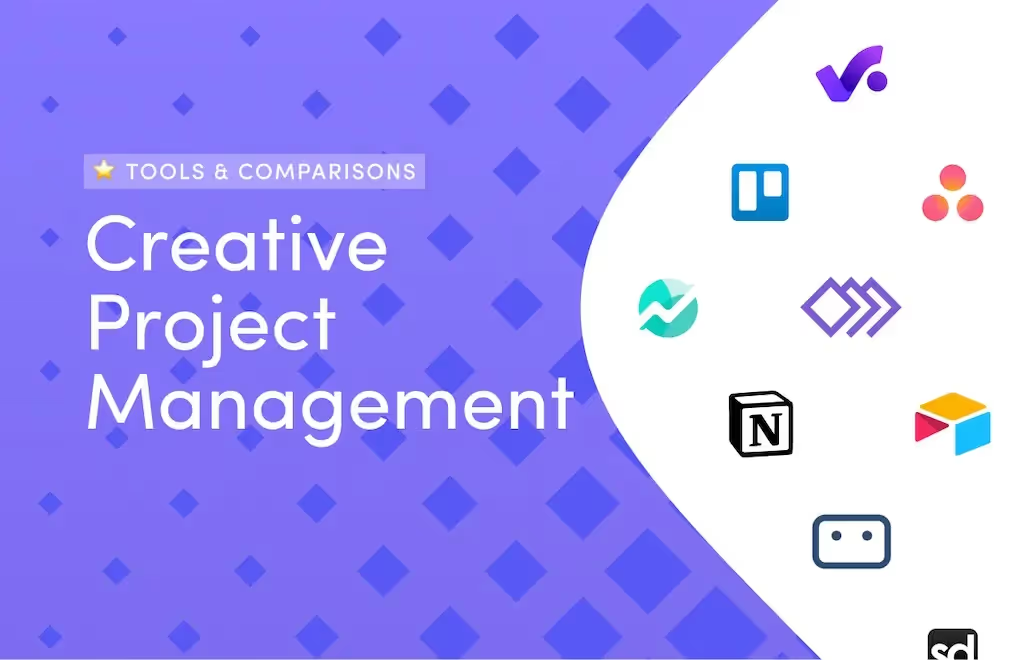


Creatives like you have unique needs.
So why should you settle for generic project management tools that don't understand you?
* pause for suspense *
You shouldn't!
Thankfully, there's plenty of software tailored to creatives out there.
And I'm happy to take you through them right now.
Creative workflows are messy.
You have drafts, storyboards, sticky notes, and more * stuff * all over the place.
That's the beauty of creativity—to allow your brain license for (a bit of) chaos.
But the last thing you want is for that creative chaos to seep into admittedly tedious but extremely important tasks like customer service, task management, invoicing, time tracking, etc.
It's like Twyla Tharp says in her 2003 book The Creative Habit…
"Creativity is a habit, and the best creativity is the result of good work habits."
And that's exactly what ManyRequests does:
Every part of the software is finely-tuned to help you make the most of your creative work.
That's because it's designed from the ground up to fit the needs of creatives, and creatives only.
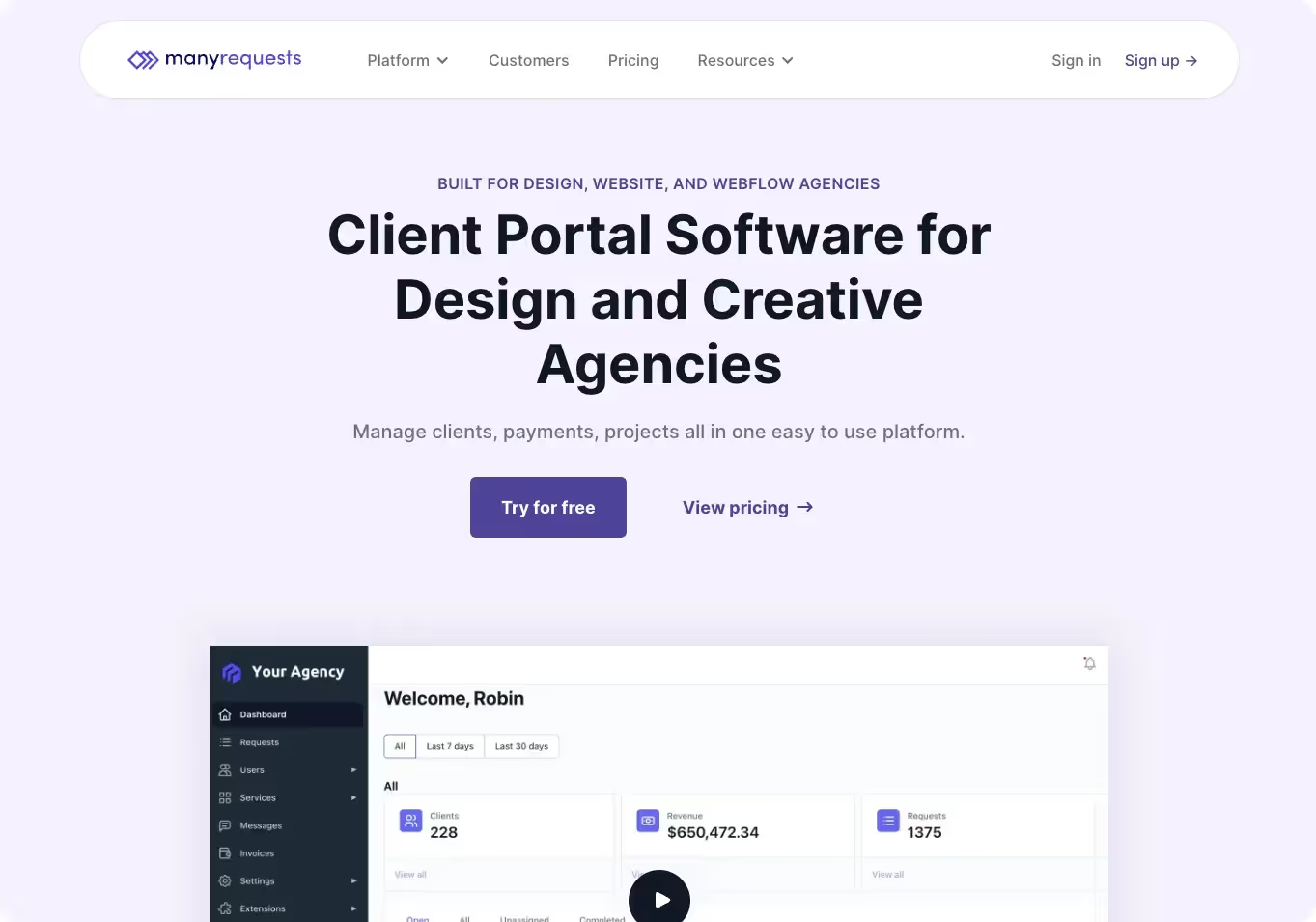
Need to gather a brief from your customer?
» Create a request for them or let them fill out a custom order form.
Want to keep track of deliverables, team members, and deadlines by individual clients?
» Just open your requests view, group them by client, and sort by deadline.
What if a customer that seemed like a good fit is taking up most of your team's time?
» Analyze your timesheet reports and renegotiate future contracts.
The idea behind a tool like ManyRequests is to make it as easy and fast as possible for you to deal with administrative work and get straight back to creating. No endless configurations or training.
Sign up, set your brand settings and services, add your team, and you're good to go.
It's your biggest creative ally, freeing you from the bore of tedious busywork.
ManyRequests' core is its customer portal.
When you first sign up, you are taken through a 2-minute onboarding process that generates your own dedicated portal which you can host at your own domain rather than ManyRequests'.
For example, you could spin up your portal at:
» portal.mycoolagency.com
Rather than the standard:
» mycoolagency.manyrequests.io
This makes it easier to trust your brand as you will own the customer experience, and the customer will only interact with you, without seeing that you're using ManyRequests (Pro plan).

On top of that, customers are incentivized to use the portal way more than they are incentivized to go through email. That's thanks to a direct line with your team and engaging features like reviews.
One of the more frustrating experiences in online services is having to send slow wire transfers or—worse—dealing with faulty payment systems. Can you imagine paying for a service, getting an infinite loading screen, and then seeing an error screen or blank page upon refresh?
* gasps for air *
These experiences are super common even in 2024.
But they shouldn't be, and that's why ManyRequests deals with it for you:

The last thing you want is for your payments system to be complicated.
With ManyRequests, you get access to your money quickly, easily, and safely.
You know the drill…
"Where did I put that file again?"
When that thought strikes, the next 10 to 20 minutes are usually full of:
It's like there was a better way to handle files all along.
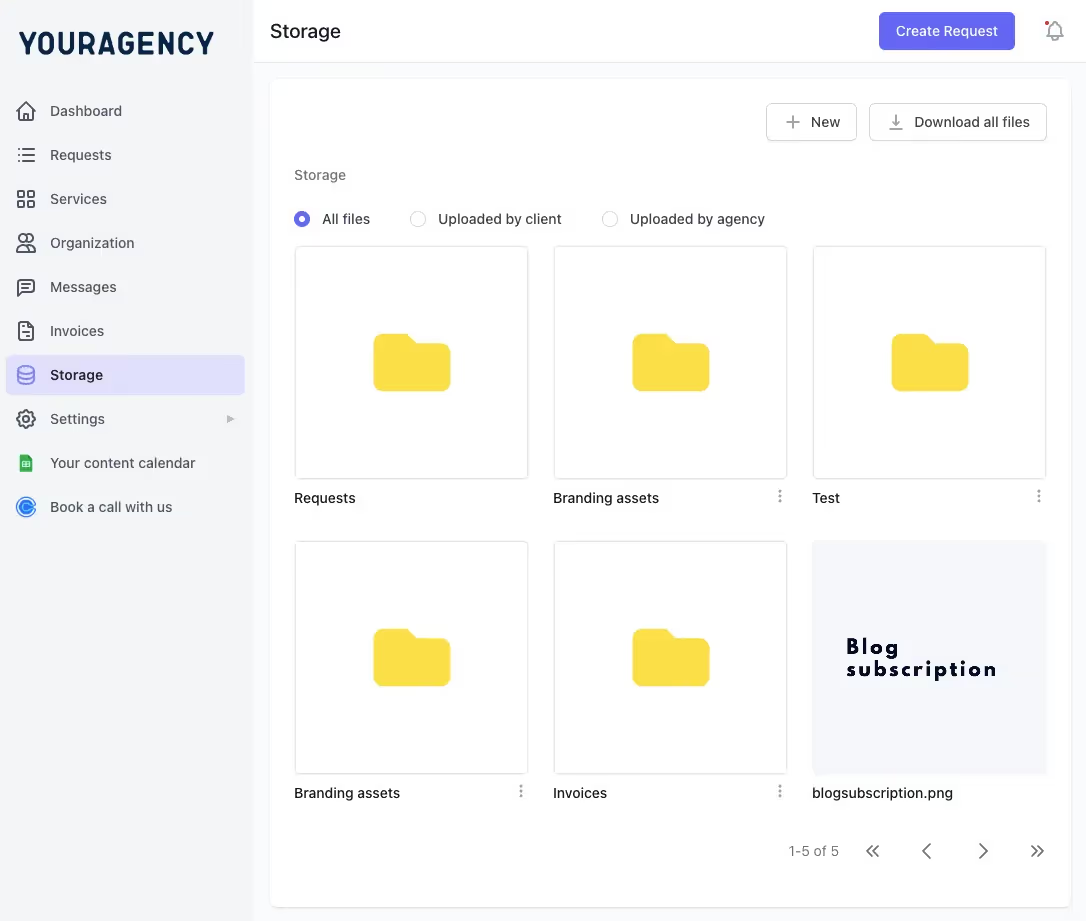
ManyRequests links your files directly to your customer, team, and task records. So you always know who did what, for whom, why, and where to find the information.
Seriously, ditch the shovel, you're good to go.
Text-only email pitches?
I've seen 'em, and they kinda stink.
Nobody reads that much anymore, and—especially with services—getting to the point pays.
That doesn't mean that traditional proposals don't work anymore for large projects.
But you need that quick feedback loop to start the process.
ManyRequests helps you by:

This gives you a highly-visual, contextual way of selling your services. And if you want to initiate a proposal, simply ask a few pointed questions in an order form—no endless emails required.
Customers enjoy staying in the loop.
Even if many don't respond to communication, they expect it.
Like a sort of subliminal message saying:
"I paid, therefore I'm quietly watching you."
(Granted, the best and longer-lasting interactions are with engaged customers.)
On top of prompt communication, customers also want accountability.
If something goes wrong, they want to know who's responsible and how it can be fixed quickly.
All of this is solved by writing things down "on paper" (i.e. keeping a record).
And that's at the core of ManyRequest's task management:
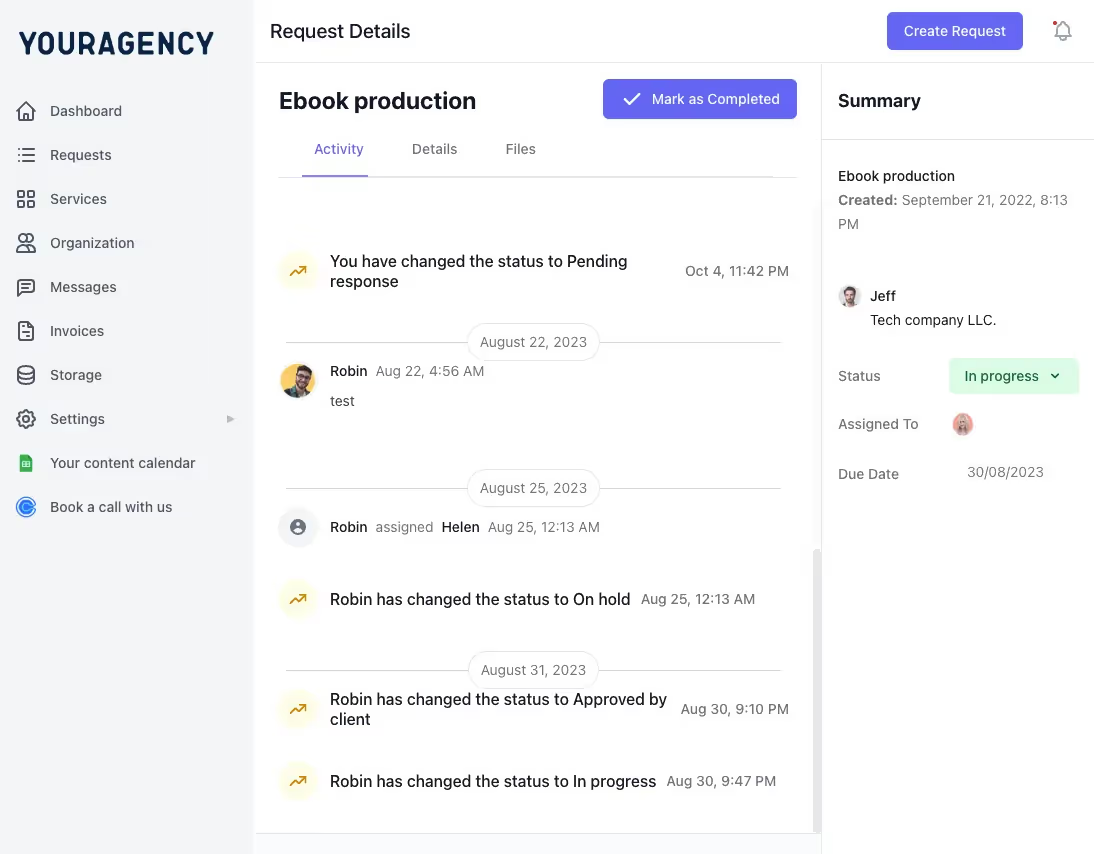
This "breadcrumb" pattern of activities is what keeps everything in check.
Customers can reference any of their past requests, and you can deal with any feedback directly from within the request, rather than having to browse left and right on your computer.
It's a streamlined way to work with customers and a huge efficiency boost.
I've briefly touched on the service catalog.
Now let me introduce the muscles behind it all.
ManyRequests has a "service builder" that is simple to use yet allows you to set recurring prices, enable trials, limit the number of requests, add form conditionals, and so much more.

It's like your tiny rocket engine—designed to help you scale your agency.
Want to offer add-on services to core services?
Check.
Create personalized requests based on form input?
Check.
Display that beautiful artwork you created?
Check.
Offer discounts for first-time customers?
Check.
The great thing about the service builder is, it's really simple to create rich experiences in just a few steps. You won't need to spend hours on it—5 to 10 minutes and you're good to go.
"Two things remain irretrievable: time and a first impression"
That's how Cynthia Ozick puts it in her 1966 novel Trust
And you gotta hand it to her…
There's not a lot of people that pay attention to first impressions.
But that's all solved for you with ManyRequests.
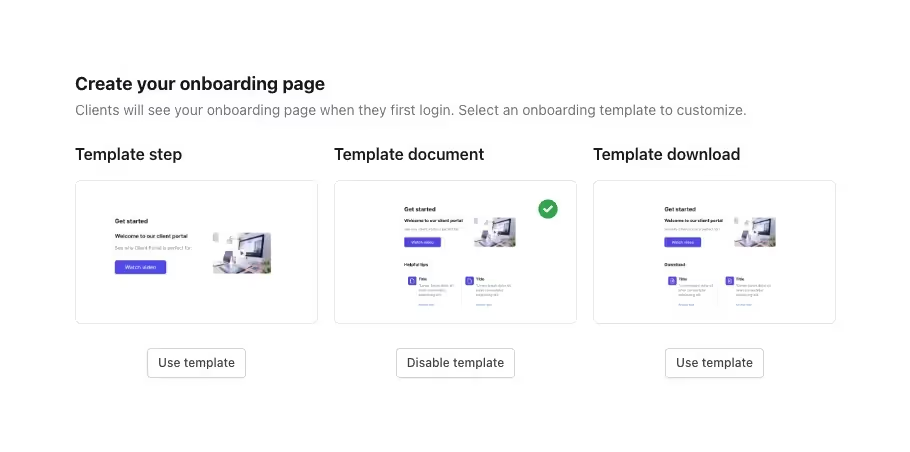
All you have to do is select the onboarding template you like, do some of your own branding magic on it, and voilà—you've got yourself a great first impression with new customers
It's really as easy as:
Once you've set everything up in your portal, you might want to peek into your customers' experience to ensure that everything looks exactly like you want it to.
That's simple to achieve with the "Impersonate" feature.
Simply go to a customer record, click on the 3 dots, and select "Impersonate."
It's a super easy way to preview what they see and provide support.
Project management usually gets complex.
Gantt charts, budget utilization, productive hours, billable vs non-billable…
* breathes in *
You probably understand the value of all this, buuuut is it really necessary to do all of it, all at once? No, and that's why ManyRequests helps you focus on what's actually helpful.
The gist of it is simple:
Both are supported in ManyRequests.
Each request has a button at the top which allows team members to start a timer directly from their browsers, so they never have to leave the context of the client's environment.
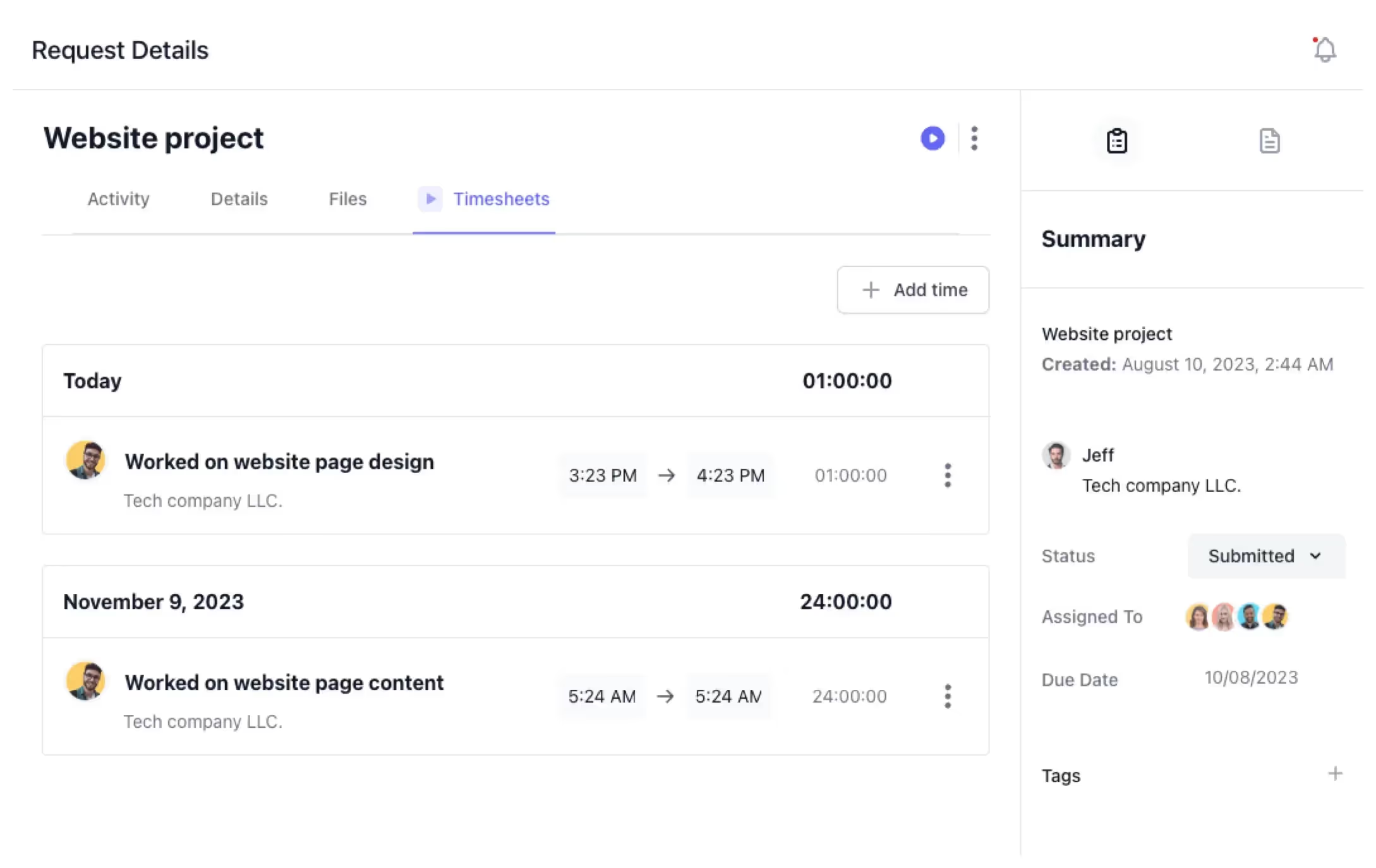
Also, team members can add their own time entries.
That's helpful if, for example, they have to work in an external system for a customer.
Time management is the basis of all agency work.
Without it, you're left to the randomness of who's doing what, for how long, in which environment, is it being delivered… (Long story short, you're likely overpaying or bleeding cash.)
In ManyRequests, the team is directly responsible for customer requests, and internal communication is done directly on the request. So they're fully-accountable.
Why is the software built around customer requests?
» Because it promotes a customer-first mentality.
It's common to see huge projects balloon out of control because creative teams forgot they were working for the customer, not their manager. Requests help keep everyone on track.
This one is probably the coolest one.
Why write stuff devoid of context when you can annotate exactly what you want changed?
It's the simplest of concepts, yet it's something that's only being adopted recently.
As a creative designer, you know how painful feedback can be:
"It's too blocky."
"Can you use more red?"
"I don't like the font, can you change it?"
Or, my personal favorite:
"I have printed it out, but the animated gif is not moving?"
Generic feedback without context doesn't help.
It's not that customers do it on purpose, it's that communicating design is inherently hard due to subjective views and preferences—so you're left with vague or hard to decipher feedback.

To solve this, ManyRequests gives your customers inline feedback tools that allow them to comment directly on your files with precise annotations—all with a mouse click.
It's simple, fun to use, and beneficial to both parties.
No PM tool is complete without reports and integrations.
They're like peanut butter and jelly: pretty good on their own, freaking amazing together.
Your agency's growth potential isn't solely solved by project management software. An unfortunate fact, but a reality for most, and getting reports to talk between different tools is a nightmare.
I know this well, I dread signing up to new services because of it.
But the good news is, ManyRequests has the right integrations for your agency:
For the most adventurous, ManyRequests even has full API access.
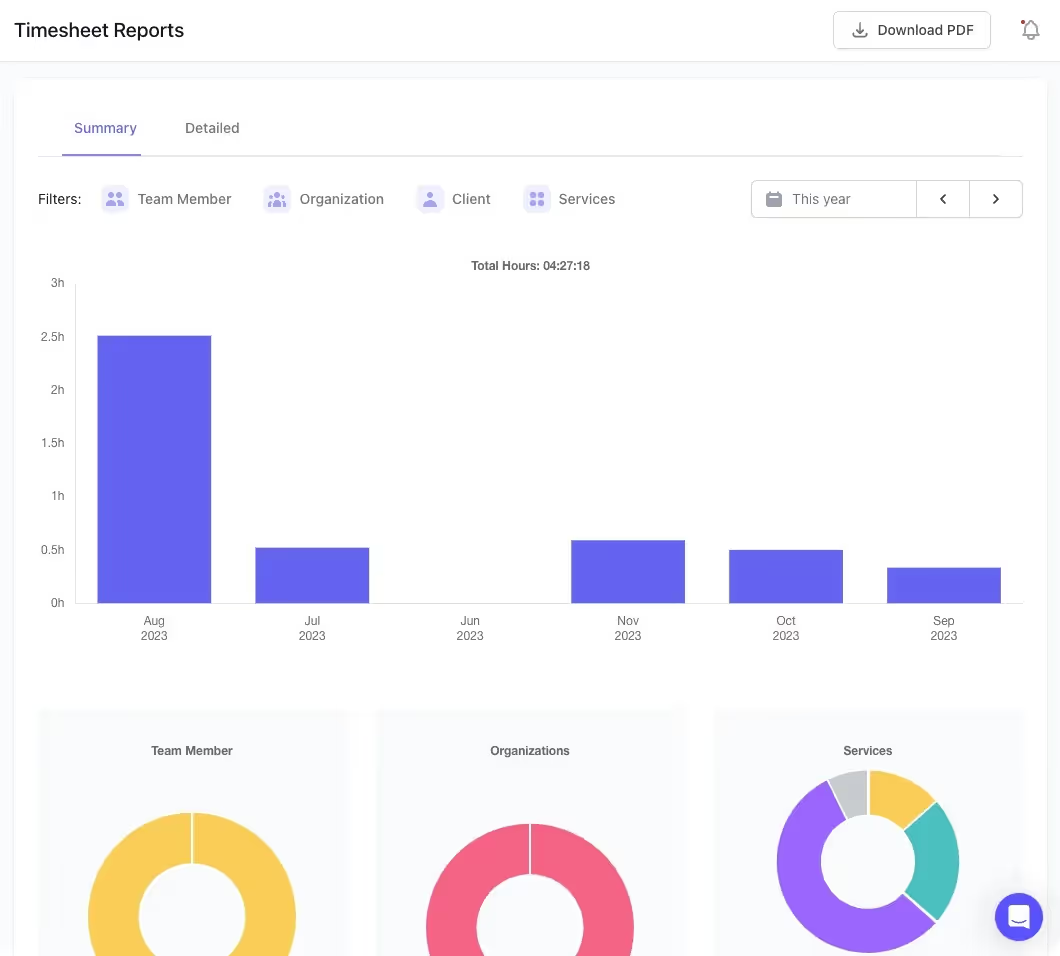
In terms of reports, you benefit from detailed timesheets that dive deep into your team's productivity, helping you make decisions where they matter the most: the bottom line.
I'll just go ahead and say it:
» I love Productive's focus on people on its website
Beautiful, full-body shots of professionals at work that don't feel like crappy stock photos.
That tells me that they have their priorities straight—helping agency people grow their business.
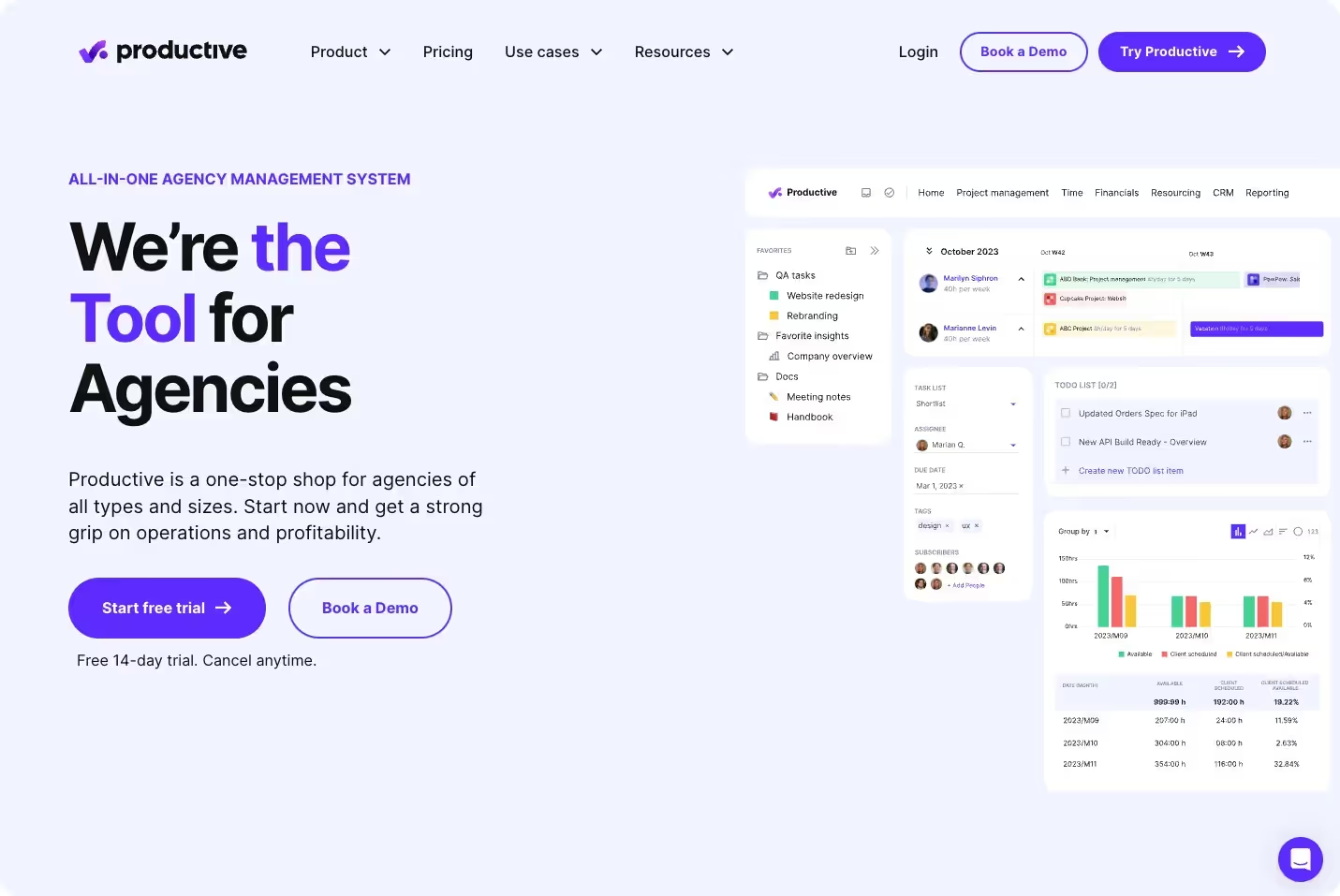
For design and creative agencies specifically, Productive allows you to invite clients directly into projects, cross-communicate between customers and teams, bill directly, and more.
There's no doubt that they have the clearest of targeting—agencies!
So let's unpack the full value of Productive's software.
One of the more interesting parts of Productive is its focus on resource planning, with capabilities to not only track time but also see who's overbooked, holiday time, team availability, etc.

This to me is the most powerful part of their suite:
If you're interested in this type of in-depth financial analysis for your agency, Productive isn't just your generic project management software. It serves this purpose well.
Speaking of money, budgeting is at the core of Productive.
Each project is assigned a budget, and you can see exactly whether your resources are eating into that budget too quickly, whether there's room for investment, or you're striking the right balance.
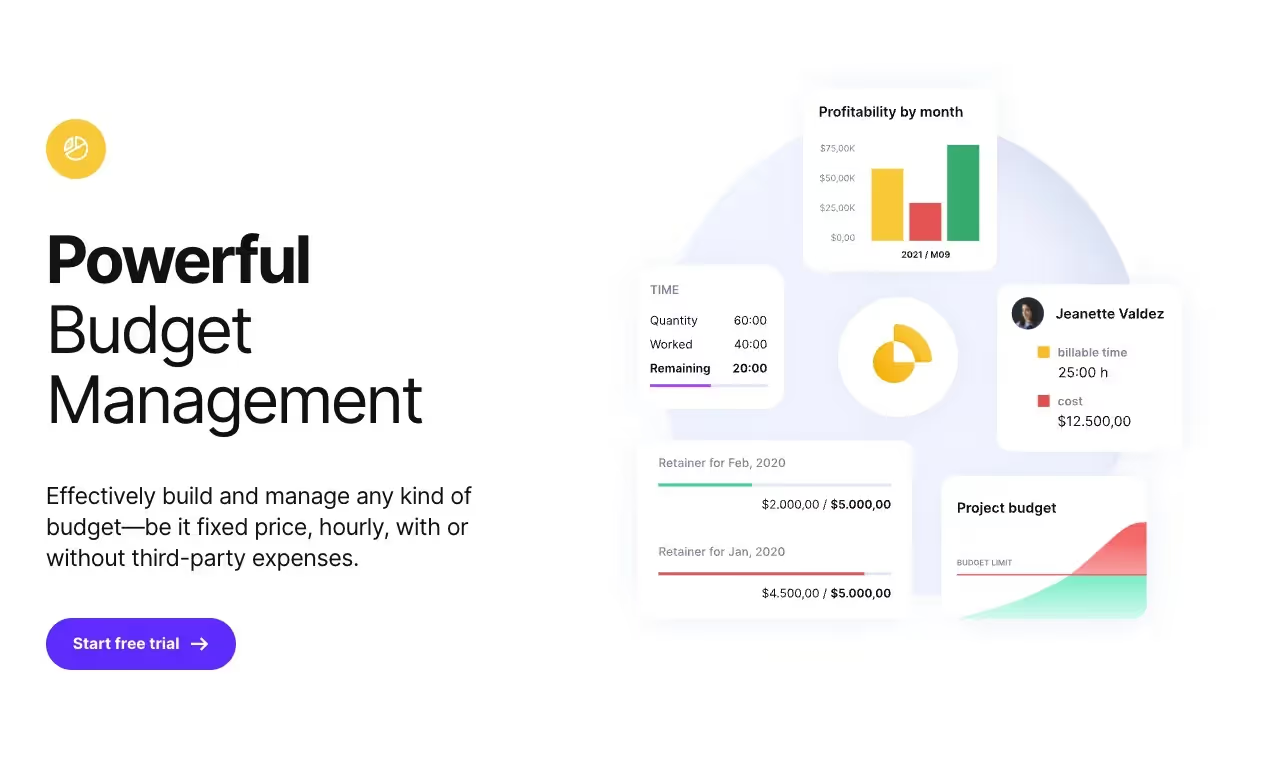
Want to track how much of a monthly retainer a customer has used?
You can do that with Productive.
Need to separate different project phases into different billing structures?
That sounds complicated, but you can do it!
Want to prevent budget overruns from eating into your profits?
Set up automated warnings at fixed % utilization levels.
Honestly, I love thinking about the opportunities for an agency here. If you're serious about growing your creative business into a healthy, long-term commitment, these tools will help you immensely.
Tying your customer records directly to your projects is smart.
It's the same exact philosophy that ManyRequests follows with its "Requests" approach.
But in Productive, it's more about having a full sales pipeline integrated into the tool.
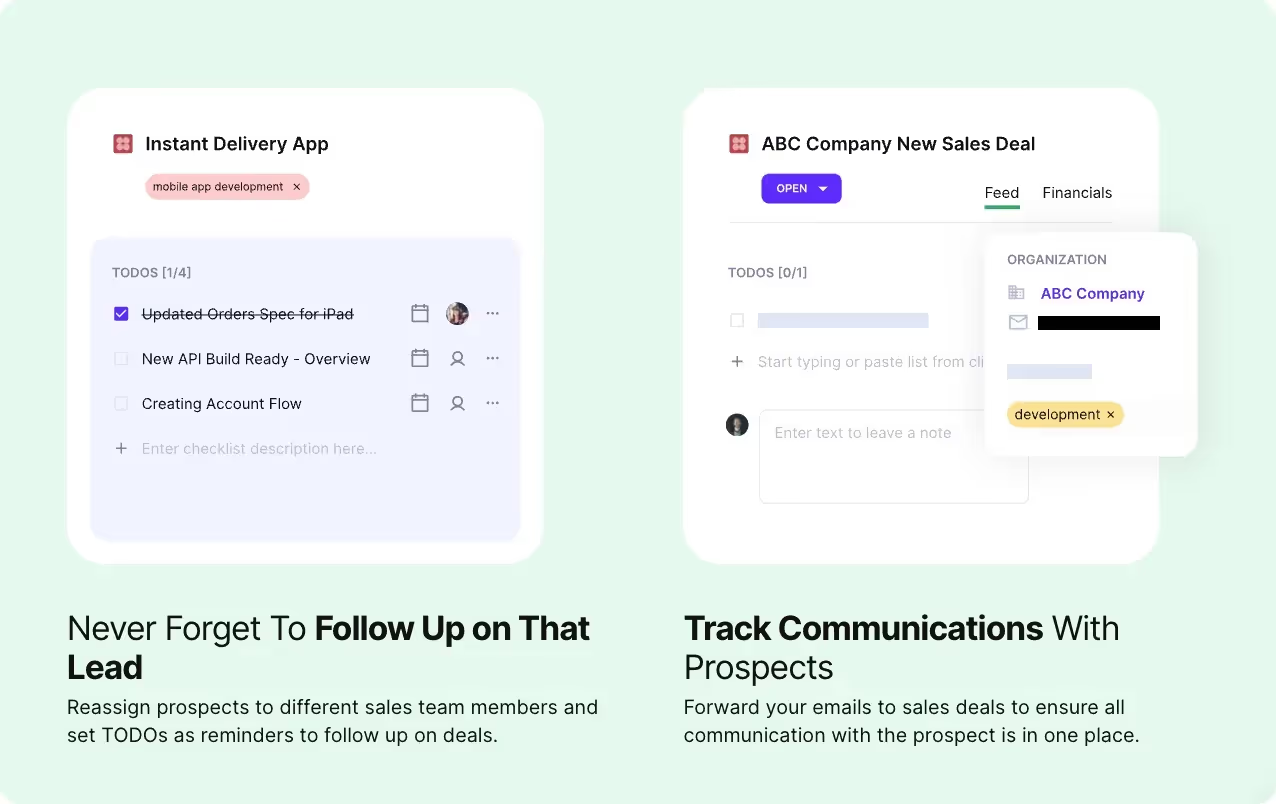
That means your agency's sales team won't have to go anywhere else.
They will be able to:
Really, it's just like any other CRM out there.
The only difference I see is that it's somewhat tied to creating projects directly from the contract that's been closed, notifying account managers to start engaging with the customer.
Overall, it's a good package worth the price, but I feel like there are plenty of good CRMs for creative agencies out there doing the same thing, and they're well-integrated.
You probably know the drill here:
True project management just cannot exist without these tools.
And Productive doesn't try to be anything different here, because it doesn't have to be.
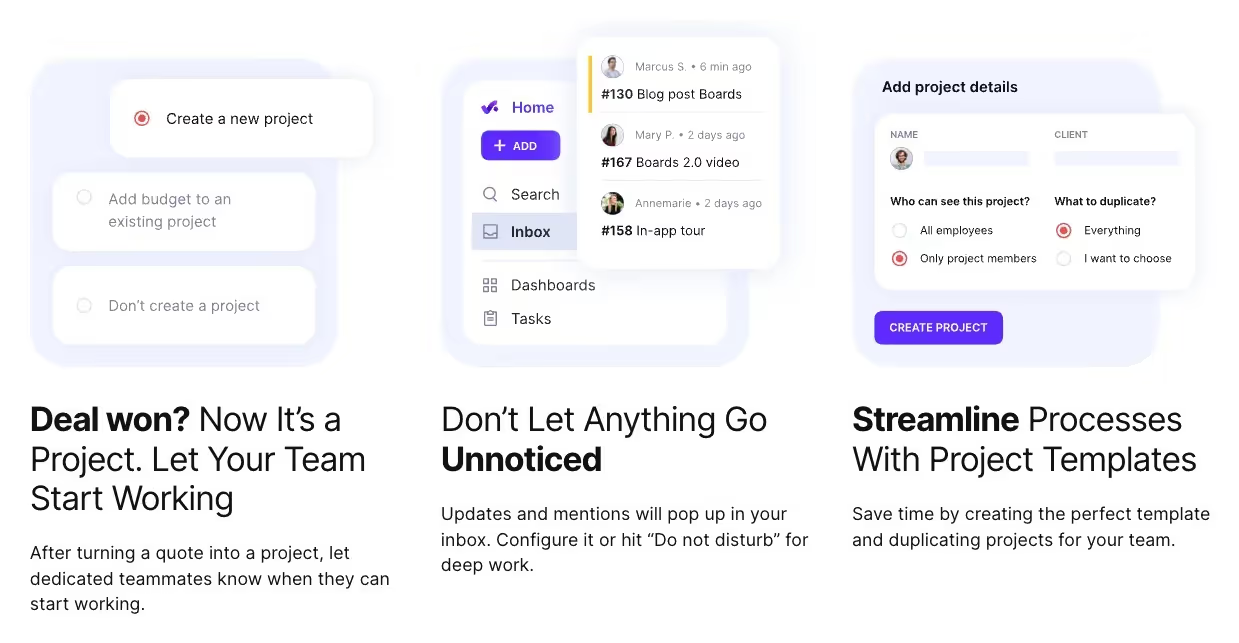
Like most modern PM software, Productive offers inline commenting and discussion capabilities, with an "Inbox" view which groups all the different discussions for each project.
You can create templates, track task progress, all the good stuff.
The way Productive handles customer engagement in the platform is interesting:
Although effective, Productive doesn't allow you to fully-customize your client portal with your brand or custom modules: projects, tasks, budgets, and time tracking is what customers can see.
If that's enough for you and you don't mind the branding bit, go right ahead!
You probably don't need an introduction to Trello.
But for the uninitiated, it's one of the most popular project management tools ever, primarily due to its shameless simplicity. It gets you productive in just a few minutes.
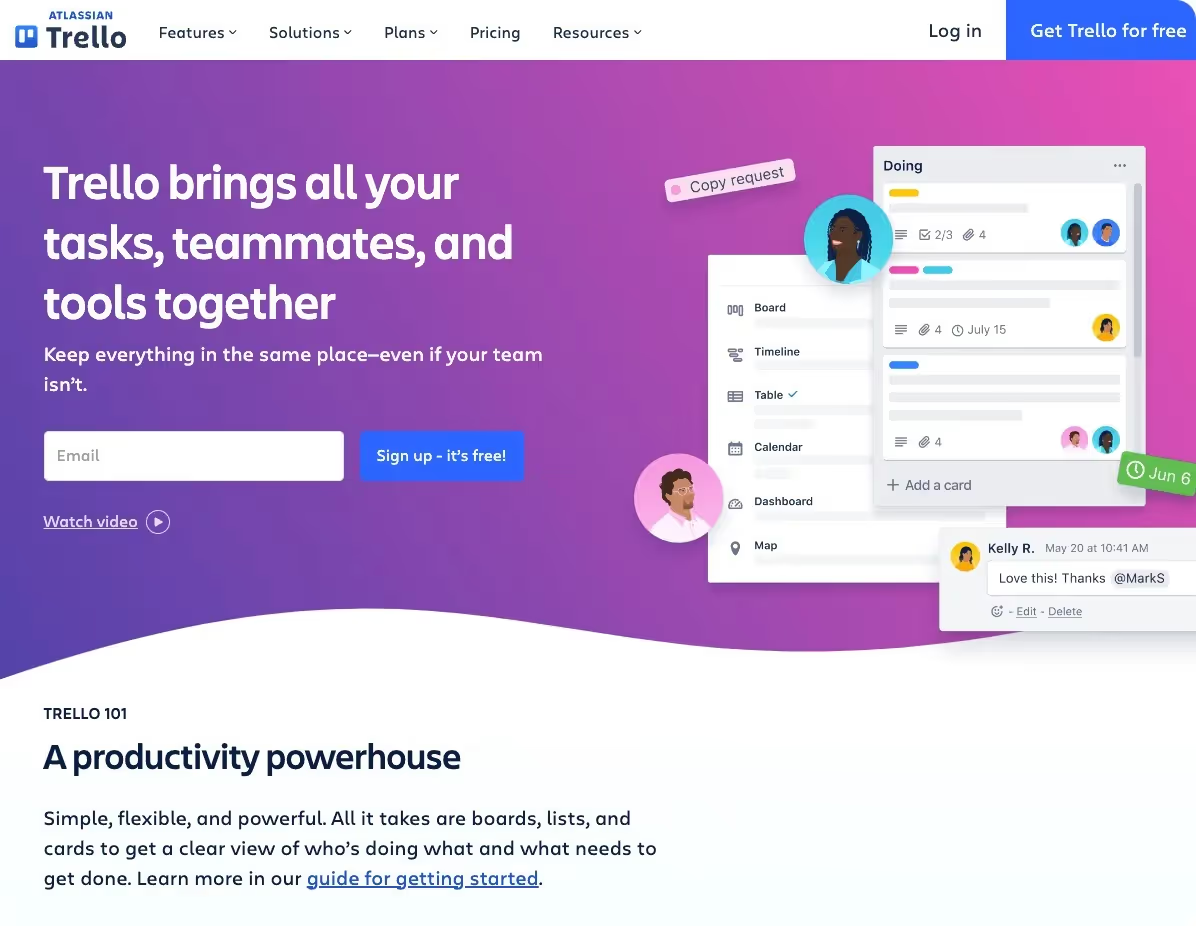
Write down the job to be done on a sticky note, put it in the column that says "To do", and you're ready to go. It's the epitome of the "Kanban board" project management style.
Trello is great for creative workflows.
You really can't blame it for its simplicity.
But under the hood, Trello offers way more than most give it credit for…
More traditional project management views like calendars, Gantt charts, and tables are hidden away in Trello's Premium plan. That's why most people don't use them, but they're there.
The reality is, Kanban boards aren't a one-size-fits-all solution:
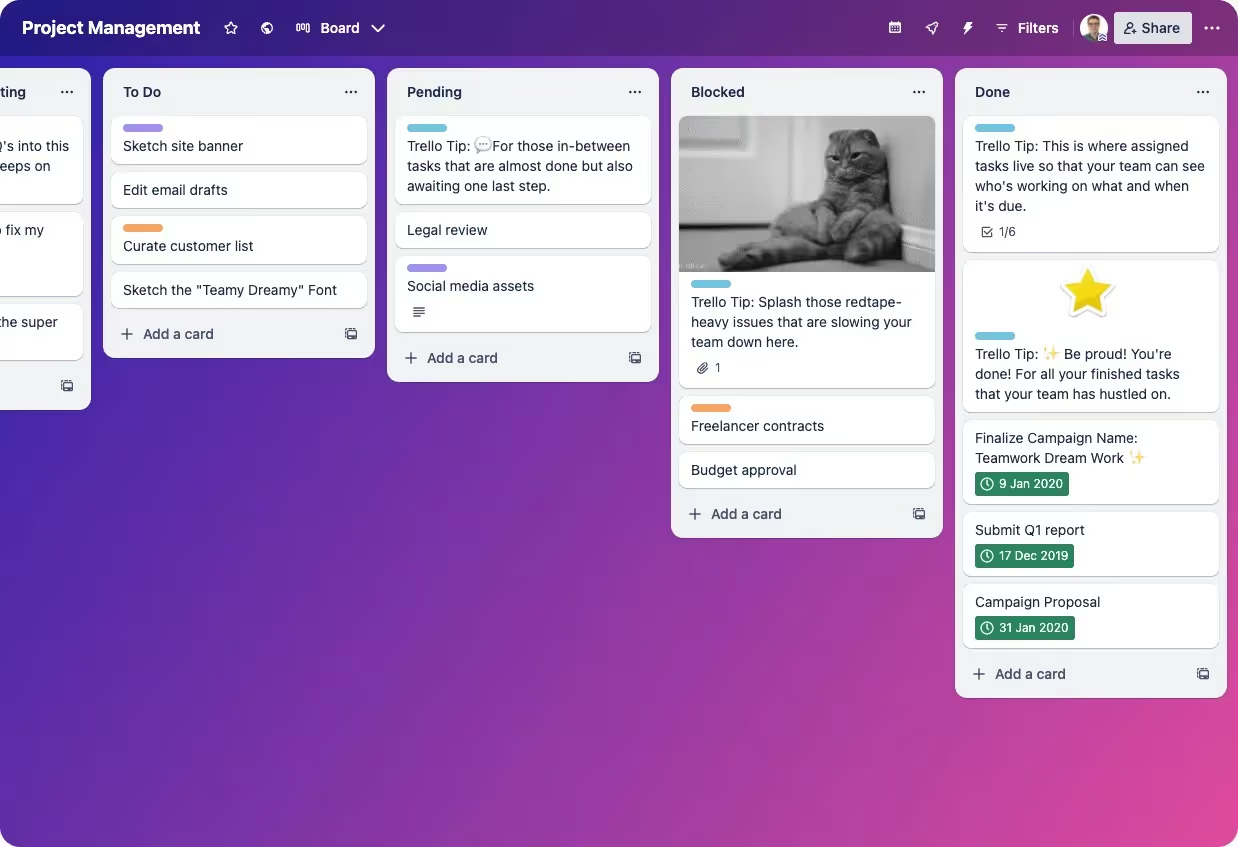
When you get serious with your creative project management, Trello can support you.
It just doesn't add anything new that other PM tools don't already offer.
You might know Trello for its manual, drag-and-drop boards.
But there's plenty of automation goodness within each card, board, and workspace.
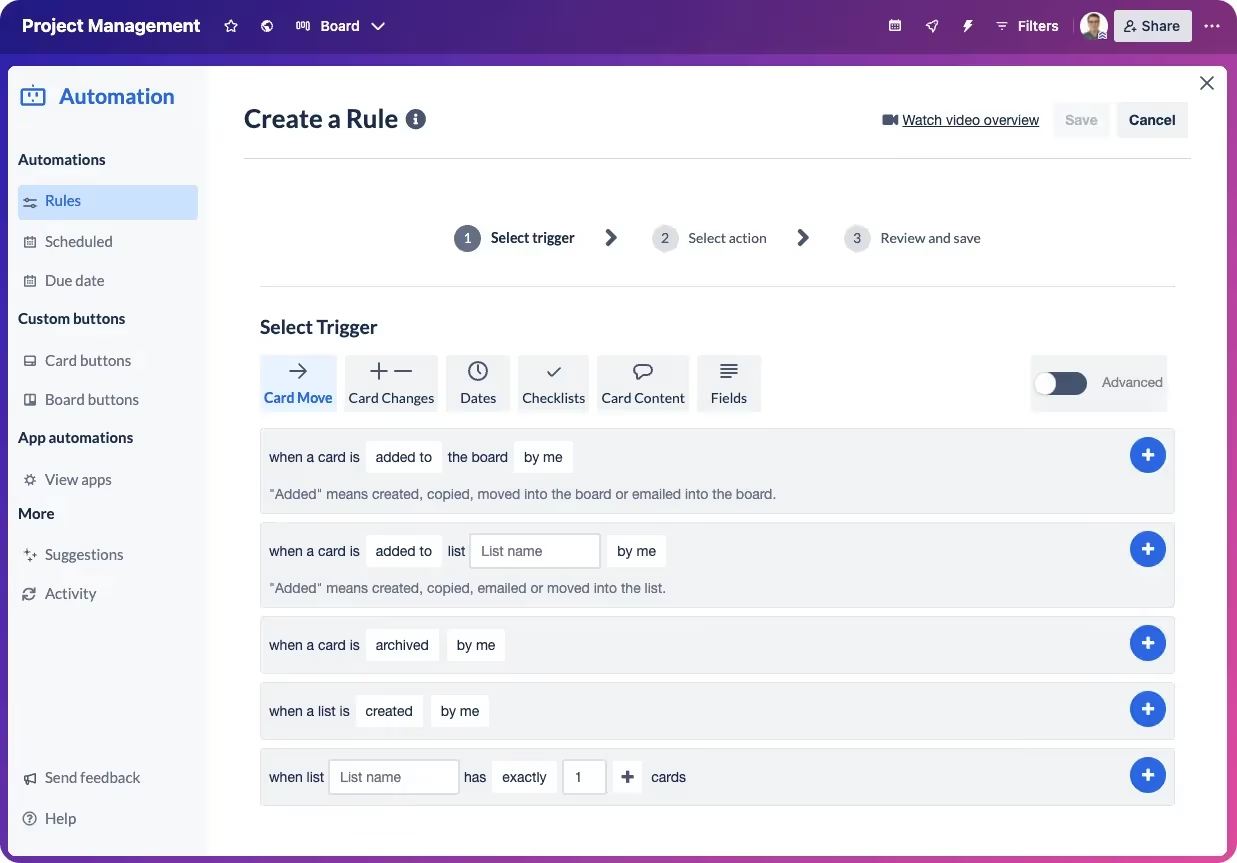
Setting up an automation is as easy as:
Triggers vary from card moves to card changes, due dates, custom fields…
And, to be frank, it's one of the most generous automation systems out there.
Free plans get 250 automation runs, but Premium plans get Unlimited, which is pretty much unheard of in a world of Zapiers and Airtables (you'll pay a lot for those automations!).
All creative agencies need to share their work with customers one way or another.
Trello allows you to either invite a guest or make a board available publicly, which is useful for customer onboarding resources or even support documentation.
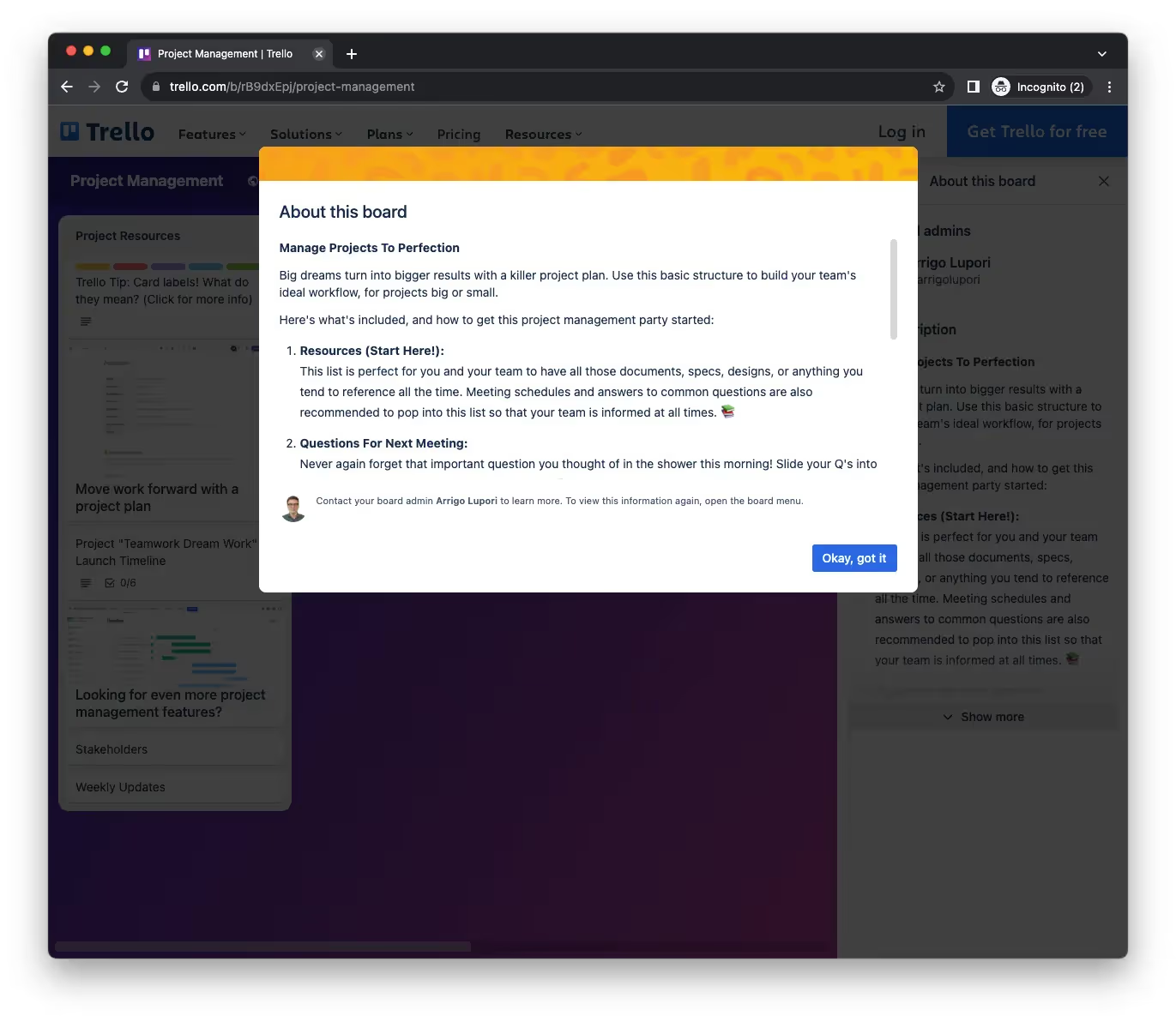
The nice thing about Trello?
You can turn it into what you want it to be.
Potentially, you could run your entire creative agency on it (no, seriously).
That's because it strikes the right balance between simplicity, automation for more efficient operations, accessibility for guests, and flexibility in how you present your work.
Some examples of using Trello boards effectively as a creative agency:
There's literally countless ways to use Trello to your advantage.
Probably one of my favorite tools in this list!
P.s. Just remember that it won't deal with any of your "other" growth requirements, like payments, invoicing, and customer engagement without integrating some 3rd party solutions.
Nifty is what you'd get if Notion, Slack, and Trello had a baby:
After going through so many tools to come up with this list, NiftyPM is the one that strikes me the most as: "Damn, they took the best parts of every tool and just mashed them together."
I don't think that's a bad thing!
Innovation isn't always about redefining ways of doing something.
It can also be about taking the best of what's already out there and making it better.
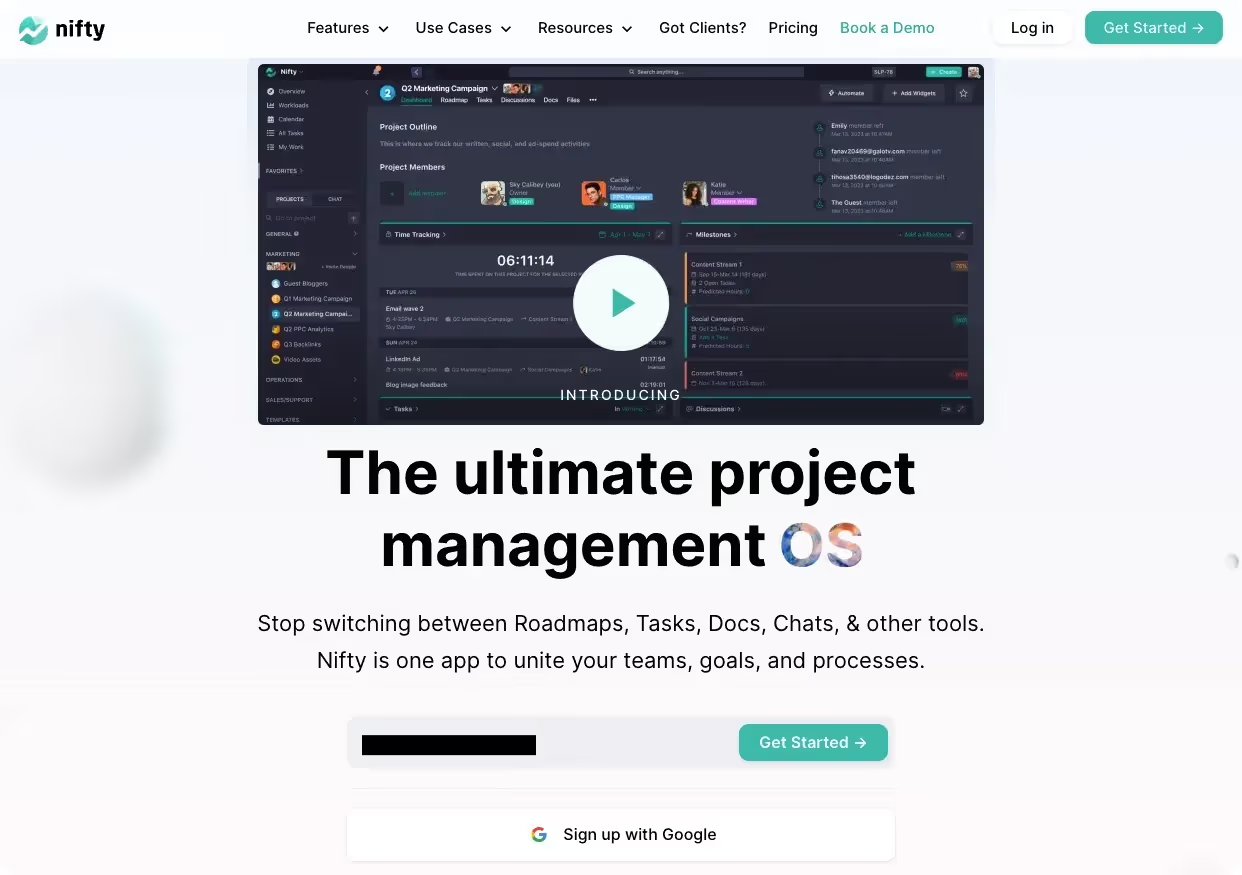
(Granted, I don't know if they were inspired from these tools, but it looks like it from the outside)
Nifty defines itself as the:
"The ultimate project management OS"
Honestly, I see the appeal of it: discussions, forms, time tracking, documents, reports, portfolios, and more all in one place without leaving the platform.
It's a very communications-driven approach.
That's never a bad thing for creative work, so it might just fit your needs!
Nifty has a neat page called:
I like that, it immediately tells me that Nifty understands they have agencies and service professionals wanting to use their product, and they have just the right place for them to go.
However, the tool itself doesn't feel like a true customer portal.
It's more like a collaborative space that customers can participate in.

At the end of the day, it's all about how you prefer to carry out your business:
Nifty offers all of the trademark capabilities of a good project management tool.
You can track time and billable hours, gather feedback, report on progress…
I really don't see many faults with it, pricing is fair too.
I see Nifty as a replacement for many other tools rather than specialized software meant to serve the specific needs of creative agencies. It brings together the best of many tools.
Its biggest capabilities include:
Apart from project portfolios which are an interesting take on grouping multiple projects, everything else is par for the course in a PM tool. But the discussion part is where Nifty shines.
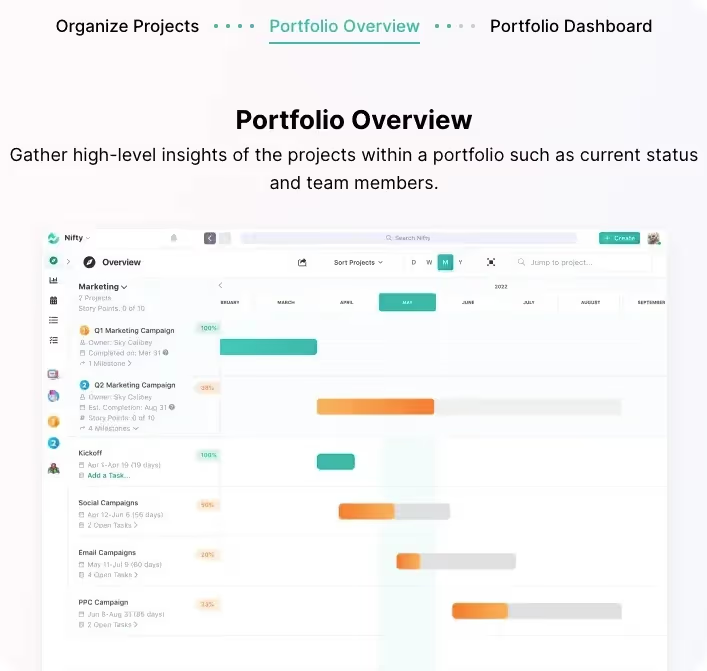
Wherever you end up on the platform, you have your team following you.
Not in a creepy, "I see you" kind of way.
Rather, you always know who's working on what.
Every screen gives you the opportunity to start a discussion.
That's cool to me because prompt communication is the key to delivering great creative work as a team, and Nifty delivers on this promise better than any other tool in the list.
You're a creative, and Notion is the place for creatives.
Not necessarily for creative agencies, but we'll come back to that in a bit.
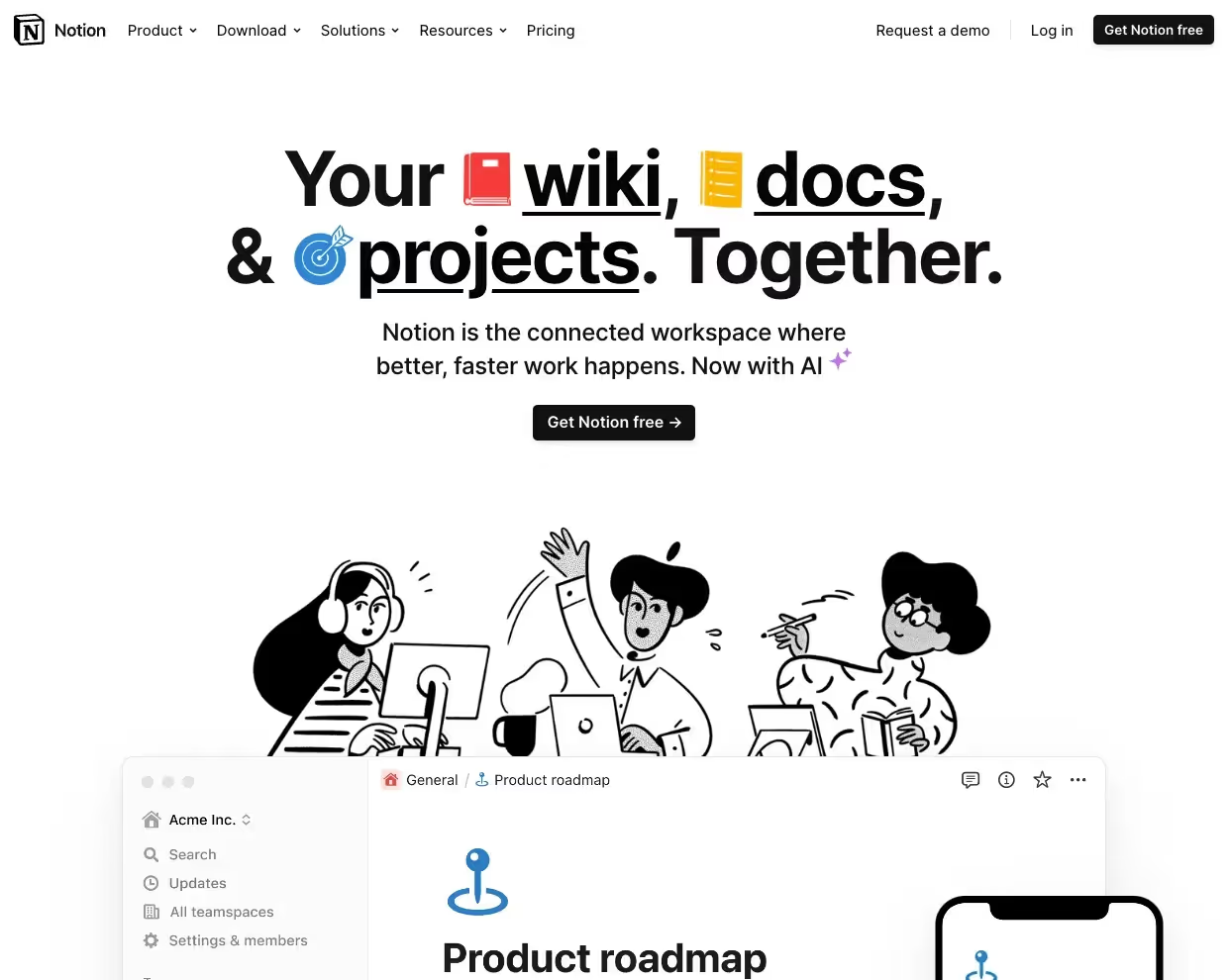
The way Notion works is:
"Fancy" is the keyword here, because Notion isn't just your typical text editor.
It essentially helps you keep your agency's collective knowledge in sync.
Think about it like this:
Basically, Notion eliminates redundancy and makes internal knowledge easily available to anyone with the right access. That's a great thing, your Word files certainly won't do that.
So why isn't Notion necessarily great for agencies?
Yes, Notion can run your creative projects (it advertises this capability heavily) but its "page" structure feels… Weird at times. Everything is a page in Notion, even folders!
You have pages, nested pages, shared pages…
Page-galore!
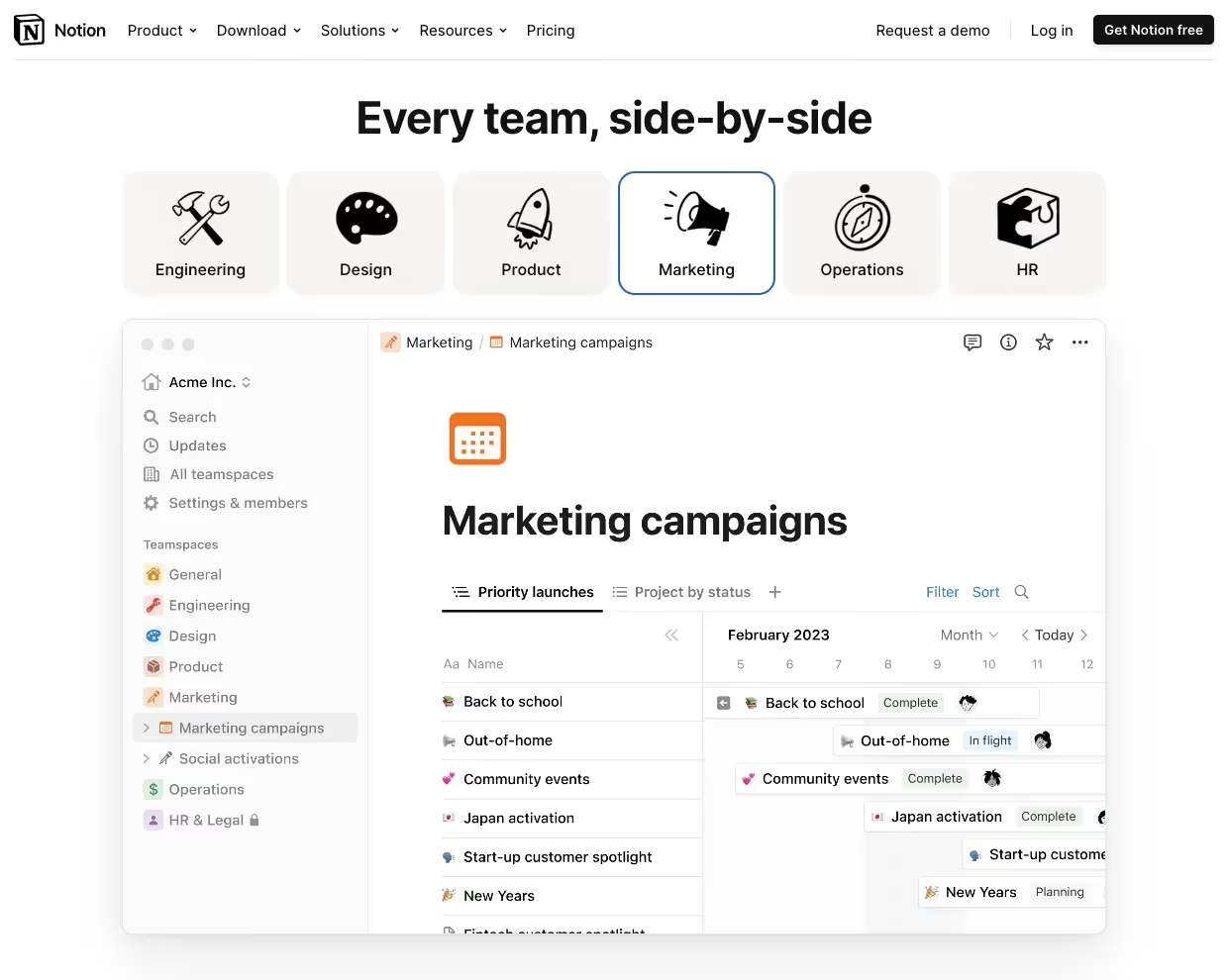
There's nothing inherently wrong with this, but it's a very opinionated style that not a lot of people find themselves comfortable with. While you can run projects with it, it feels more like a "documentation on steroids" type of tool, if that's your thing.
With that said, Notion made this list because it's massively popular.
Plus, they're hyper-committed to a creative mindset.
And that's where it really shines…
As a creative professional, you probably value creativity a whole bunch.
Notion is designed around the idea of creative freedom, and it really shows.
That's where the "pages made of blocks" structure shows its muscles.
Images, videos, embeds, page links, tables of contents, checklists, inline kanban boards, third-party apps, synced blocks, completely customizable blocks…
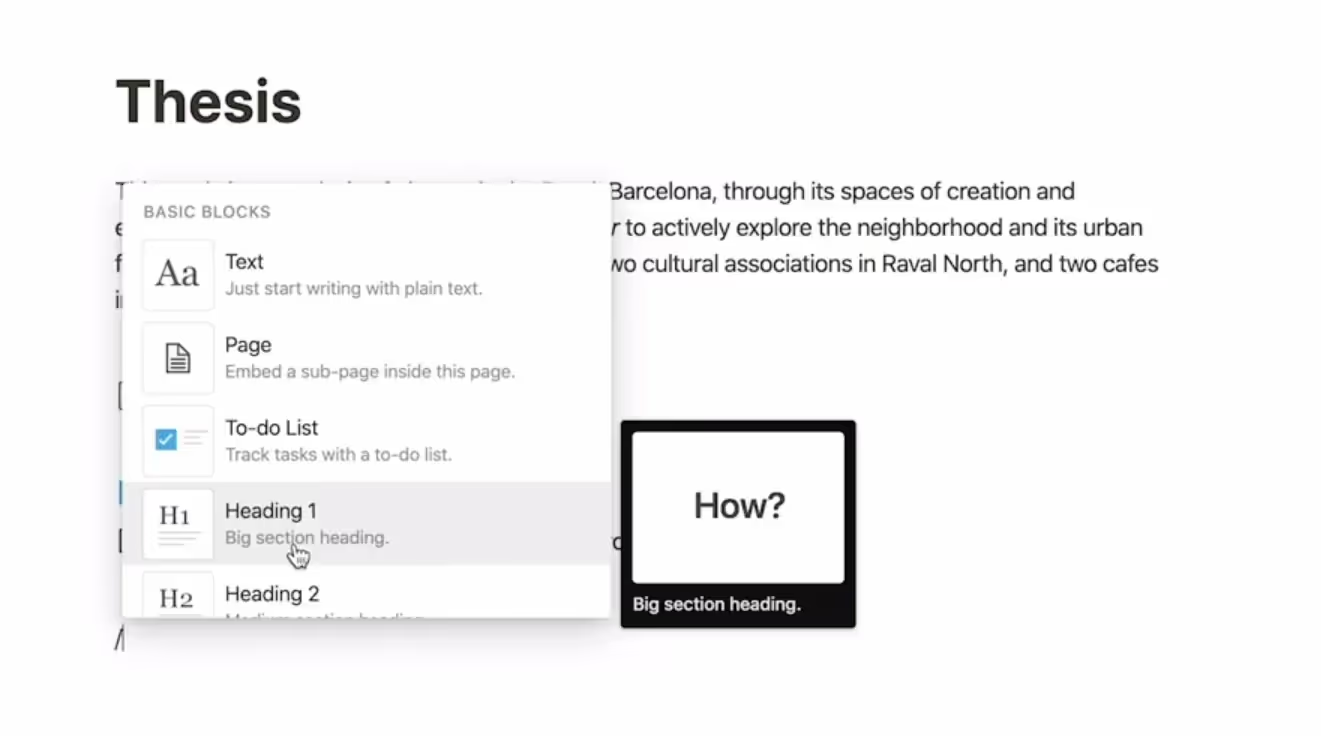
If choice is your thing, you got it.
With this amount of interactive might, Notion truly is the most interactive "smart document" experience out there. And that can boost your creativity in so many ways:
Just like Trello, you can have Notion do whatever you want it to do, as long as you're ok with its limitations around the page architecture and the somewhat unorthodox project management style.
If you've never heard of Workamajig, I don't blame you.
I'd never heard of them before writing this list either (sorry, I'm being honest here).
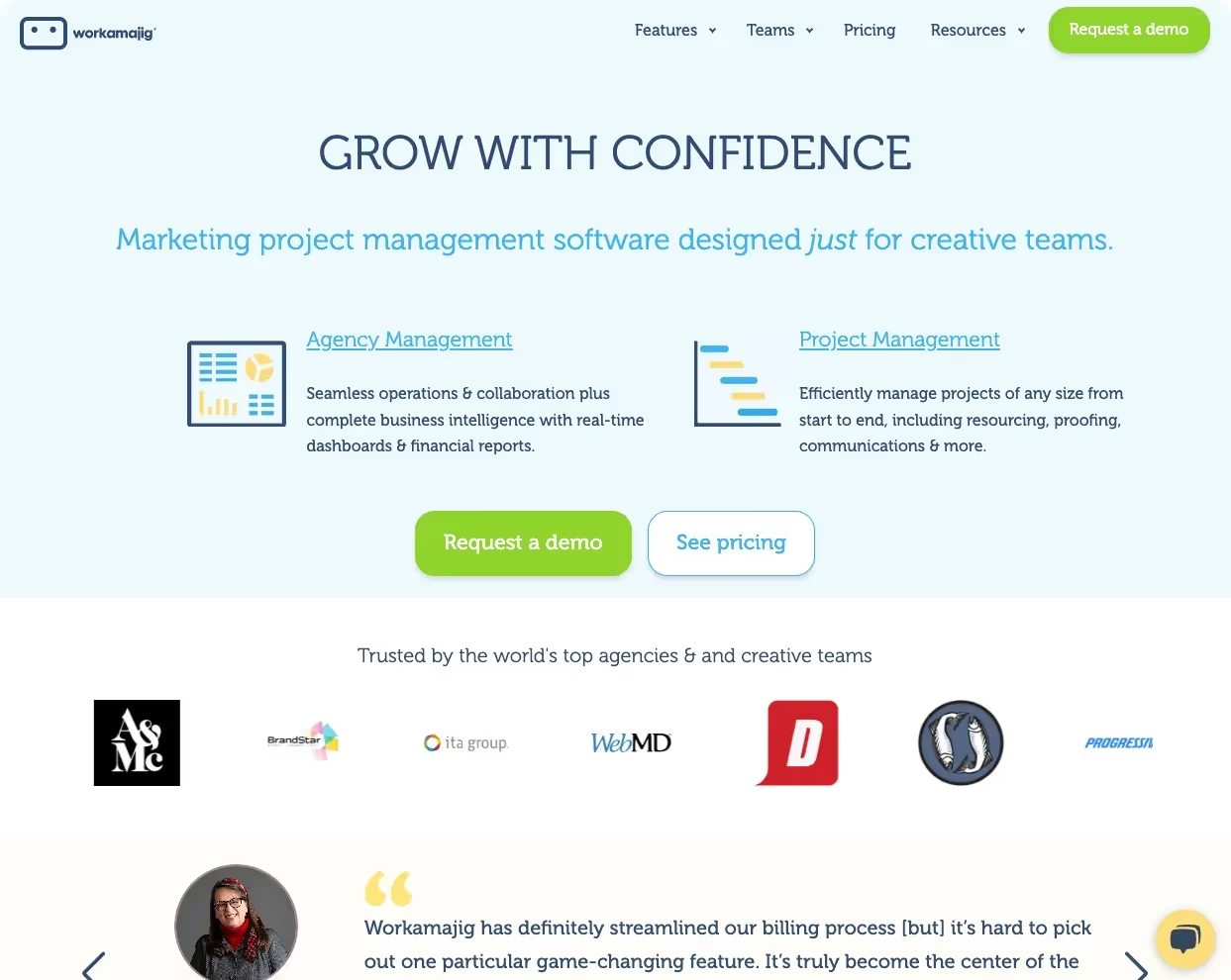
Incredibly, they've been in the creative project management industry for THIRTY years.
That's longer than any of the other tools in this list by a huge margin.
So, is their software any good?
I have a few thoughts.
No matter how you look at it, Workamajig's pricing page paints an expensive picture:
Honestly, this pricing feels like an arbitrary slap in the face.
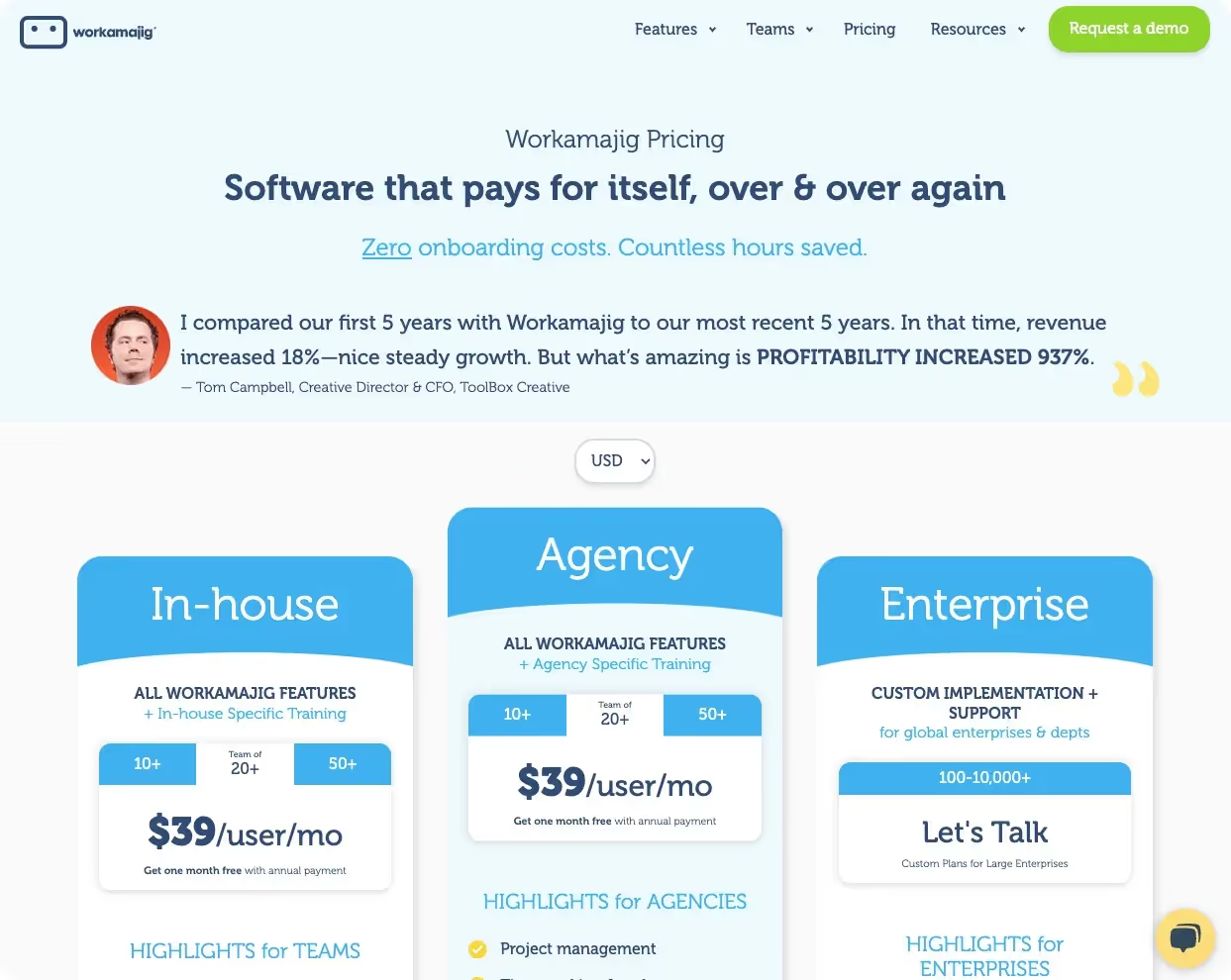
And it doesn't end there, it even splits additional fees between in-house and agency, with very little clarity on what you're going to end up paying overall in the long-term.
This to me is a big downer.
Why?
Because they're one of the few tools with a positioning towards creatives.
Yet they price themselves out of most agencies' reach.
But maybe the ROI is the whole point here…
If you'd asked me who'd win the creative PM battle on paper, I'd hand it to Workamajig.
Their feature set is extensive and—if executed well—impressive:
It does a LOT of stuff.
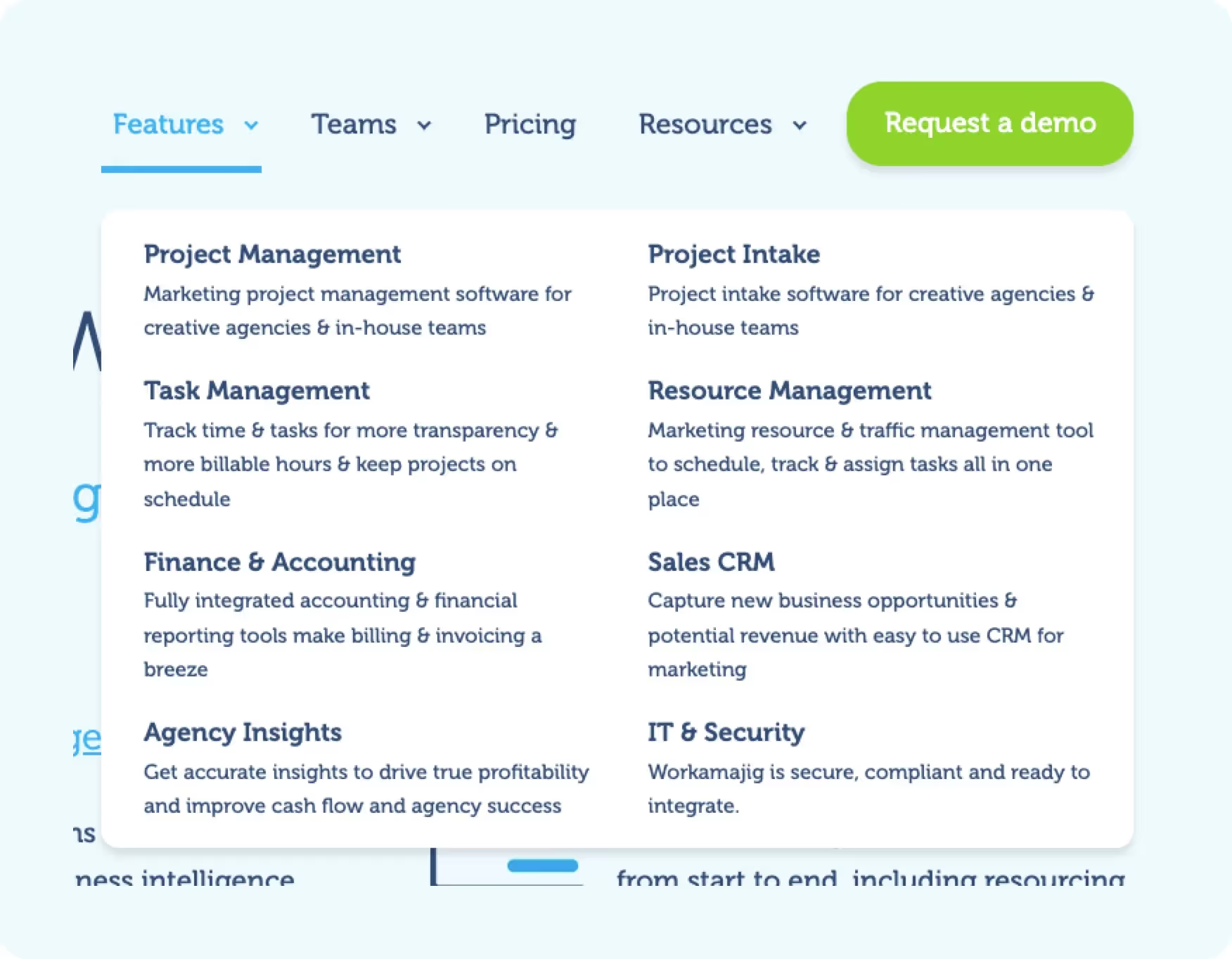
Sometimes that's a good thing, sometimes not so much.
The question is, is all of this relevant to your creative agency?
On paper, Workamajig covers every single line item.
Full PM, sales, insights, integrations…
The whole shabang.
But in practice, the website feels outdated, the product's interface overly-complicated, and the overall package certainly not as appealing as other choices in this list.
Look, I'm here to give you my opinion.
I don't enjoy the way the tool works and feels.
It feels like it's starting to wear those 30 years of age right on its sleeves. But if you're ready to train your team on it and you like the product, it might be the right solution for you.
I'm not mentioning reviews for any of the tools in this list because all of them are above 4 stars across the board. Except for Workamajig, which averages at around 3.7 on G2 and GetApp.
That's an important sign to look into.
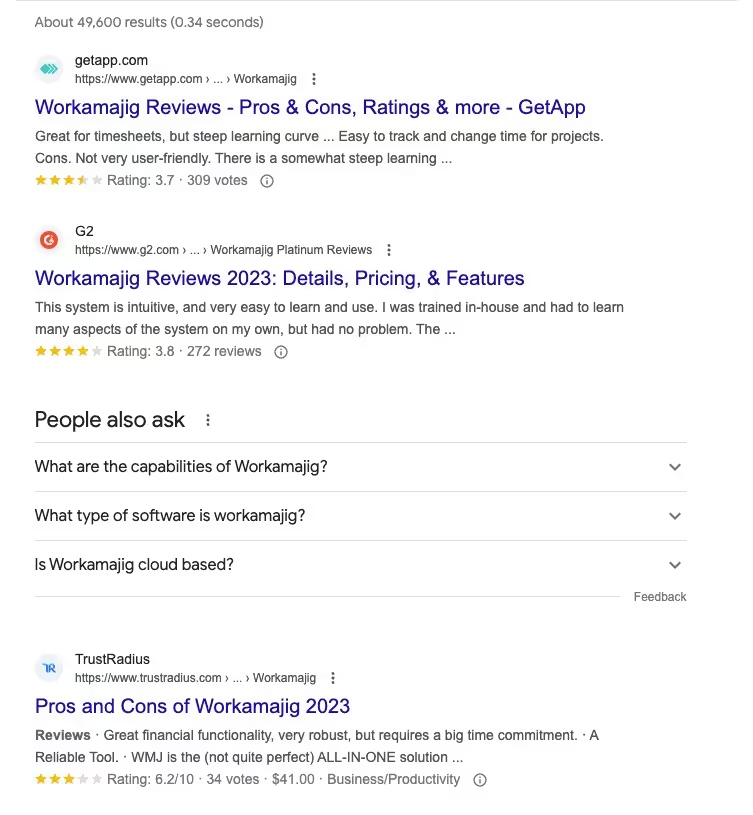
I'm not here to judge the product's actual functionality, I haven't used it after all. But I do invite you to browse through the reviews due to the lower than usual score.
Here are some of the good ones:
"It is a user-friendly tool. Support is only an email away. The ability to have one-on-one training with a Support Team member is extremely helpful when navigating through new processes and procedures for a growing company like ours."
"I love the fact that estimates, hours, budgets, finances, purchasing and all things that go into running a successful creative company are tied together. Client, project and operational costs are all available in one system. I also LOVE that I can create custom reports and schedule them. While not all data is available in all reports, the flexibility is incredible."
Source: G2
And here are some of the bad ones:
"Single worst piece of software I have ever had and I’m embarrassed that I was one of the biggest advocates to move to it. Designed for shops to churn out tasks, not full service marketing agencies."
"The product suffers from an inability to focus, and tries to be all things to all people. The interface is really clunky and not intuitive."
Source: GetApp
I'll leave the decision of whether they're relevant up to you!
Look, I have a soft spot for Airtable.
I've used it since 2019 and it's been an absolute godsend to do content work:
BUT, Airtable is not perfect for every use case.
You can run a creative agency with it (and you probably should if you're an operations-driven firm), but there are some tradeoffs to make, and I'm more than glad to take you through them.
Airtable doesn't work like "normal" project management software.
If you're used to the Trellos and Asanas of the world, you need to leave that knowledge behind.
Airtable can emulate their behavior, but it's meant to connect more than manage.
Let me explain:
What can you do with these relationships?
Pretty much anything.
Let's say you have a table called "Customers", one called "Briefs", and one called "Deliverables." Customers are sent a new brief, which then triggers a deliverable assigned to their account manager and dedicated designer with the brief's information ready to go.
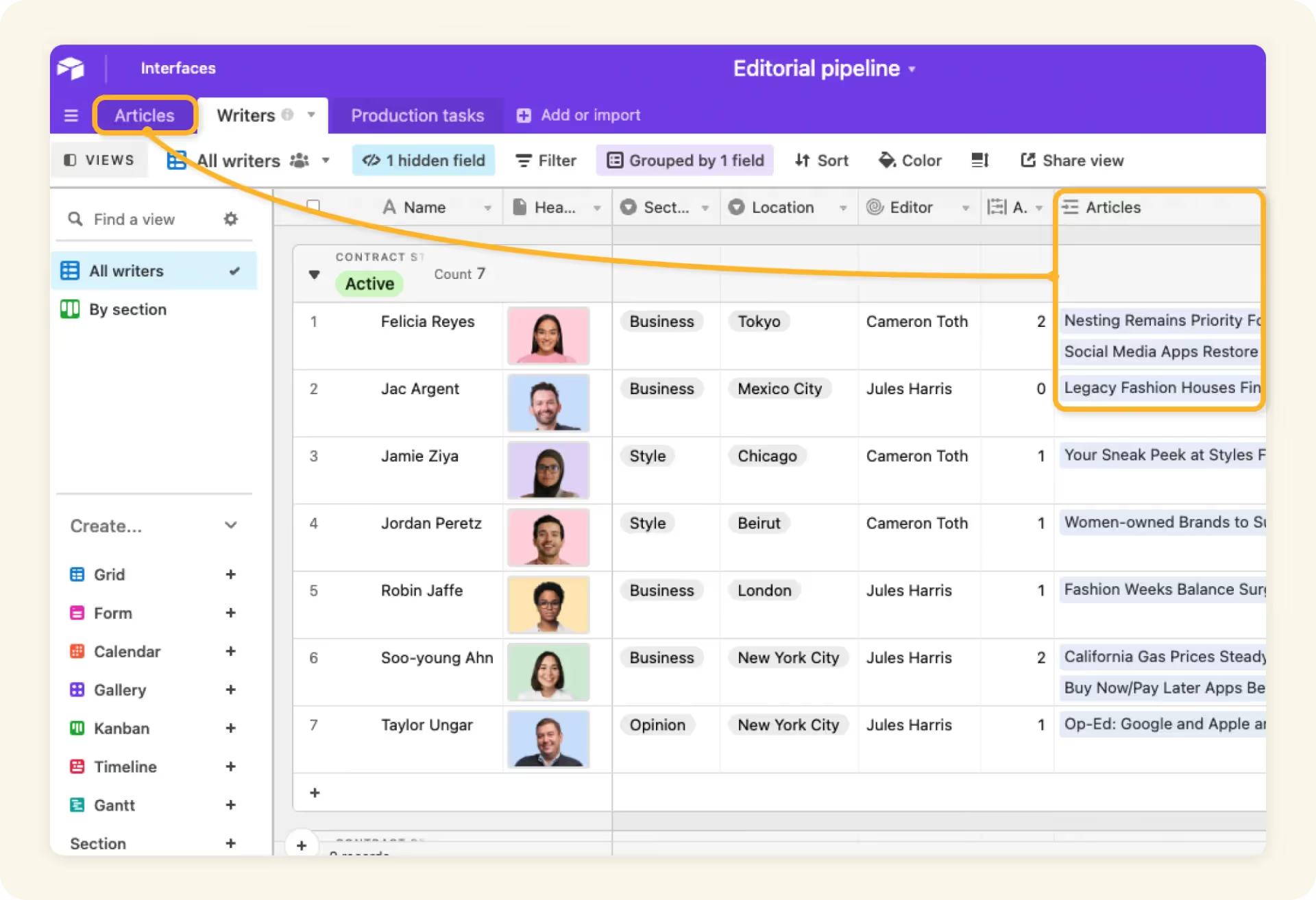
The account manager takes up the brief—communicating with both the customer and the designer—and then gets the designer to follow a few steps in a "Design request" interface.
All standardized and personalized to your agency's needs.
The biggest problem?
You have to create it all from scratch.
There are templates available on Airtable but they're often so basic, poorly-done, or just not relevant to your processes that you'll only waste time trying to use them as is.
So, Airtable is relevant IF you're up to developing custom processes.
There's no doubt that Airtable makes you efficient.
But it likes to stick its brand, well, everywhere.
Sending out a design request form?
You're stuck with Airtable's domain.
Sharing a table with customers for review?
Huge Airtable logo on the right, with buttons to sign up everywhere.
Want to share an interface with customers?
Geez, you're out of luck, you need to sign up for that one!
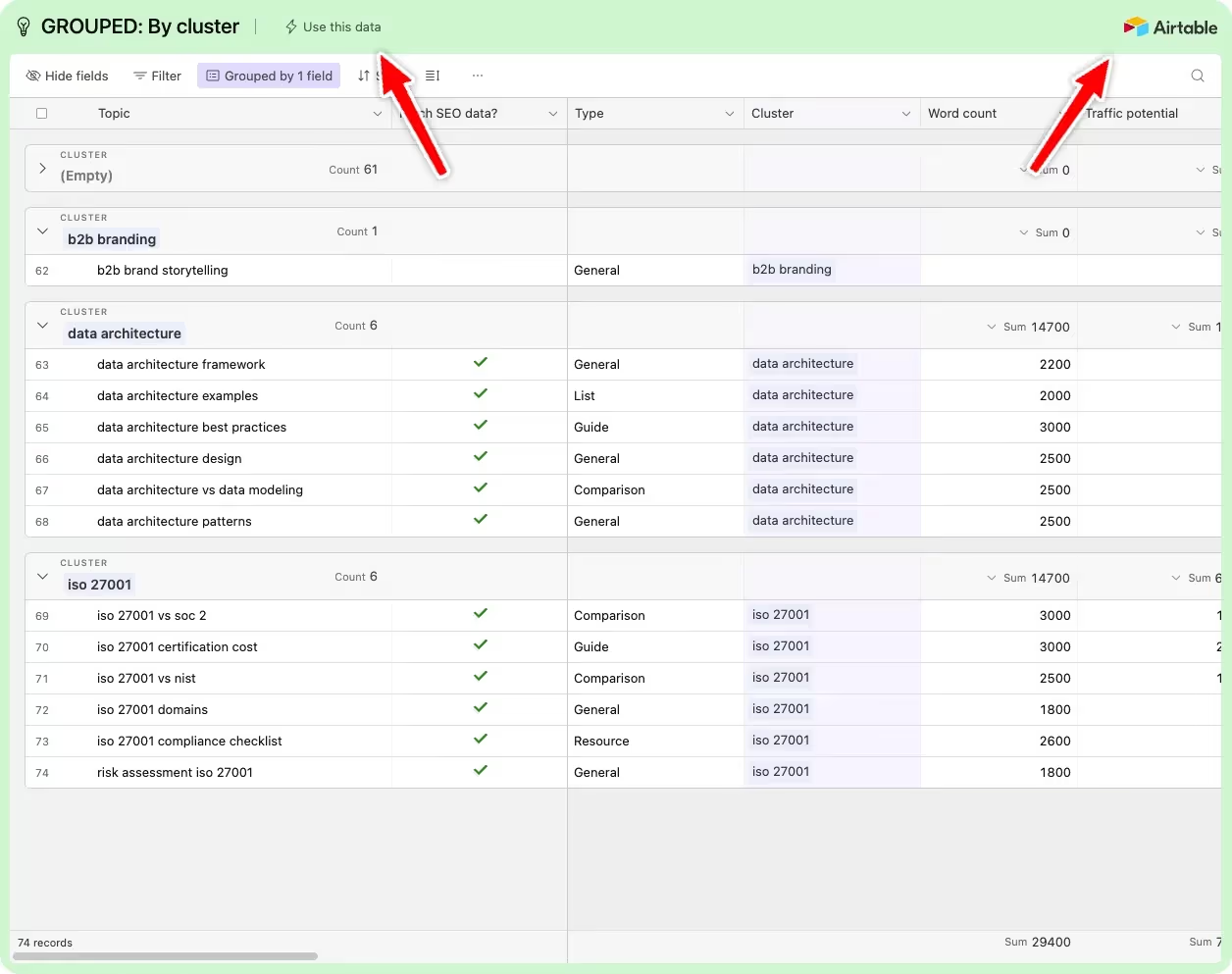
Airtable itself is a marvel of technology.
But its (dumb) obsession with referrals is an exercise in frustration.
Why? Because it constantly nudges people to sign up in places where it's not necessary to ask for it. Can you imagine having to pay an extra $24 / mo for every customer that signs up?
Or having to shell out money for a 3rd-party solution just to remove their logo.
Need more efficient internal operations?
» Use Airtable.
Want a growth suite catered to creative agencies?
» Use ManyRequests, Productive, Workamajig, or Screendragon.
Even though it's great for operations-driven PM, Airtable doesn't cut it for almost any other use case. It's too cumbersome as a client portal and too complex for simple creative requests.
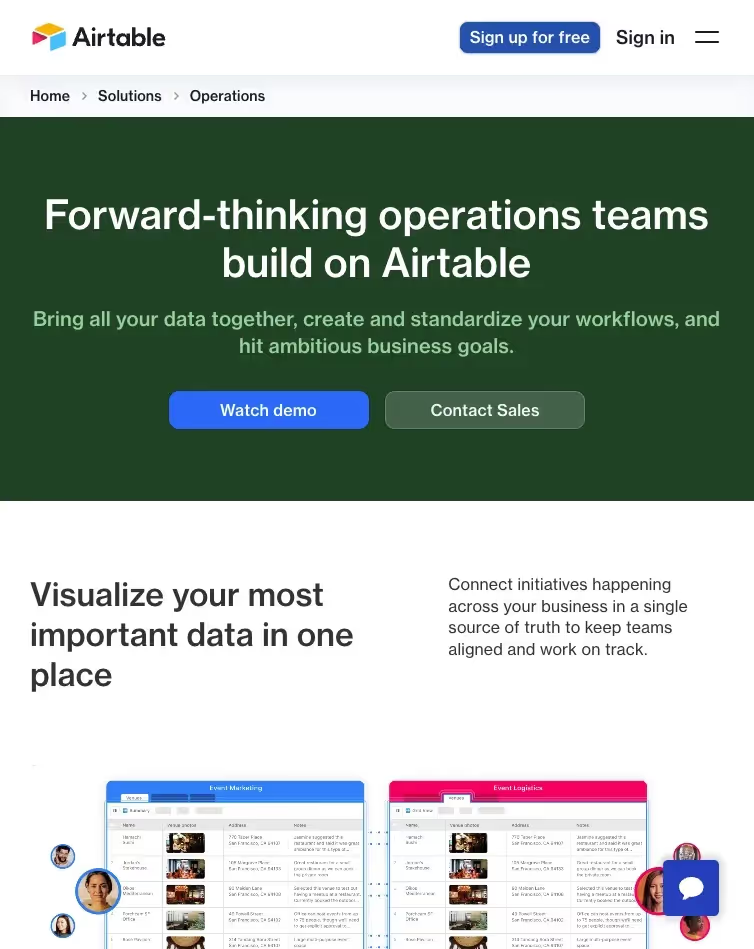
When you're growing, you don't want to spend time on updating the database.
You just want to deliver great work for your customers.
Ok, I'll be honest.
The only reason why I added Screendragon to this list is that it made the cut for "creative" project management software, but I personally do not enjoy the way they present themselves.
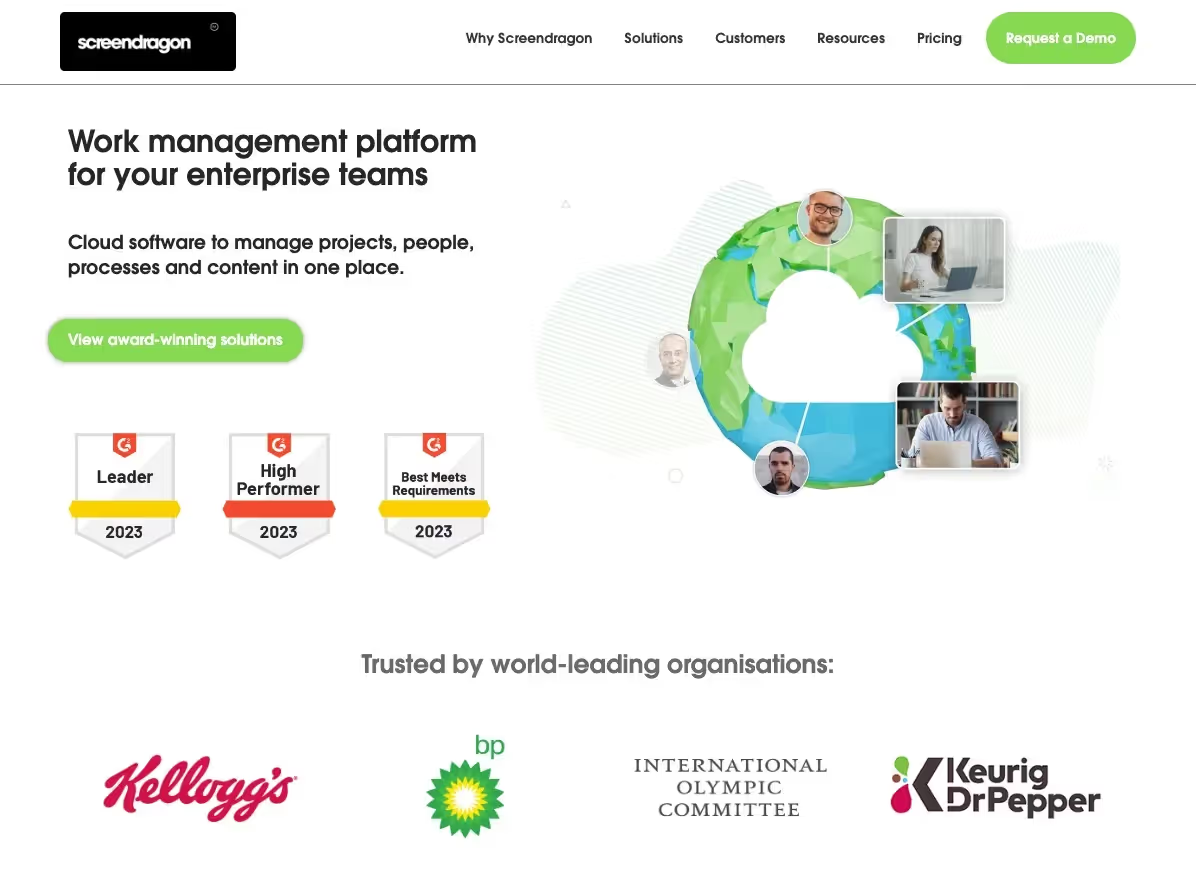
They're very corporate-y and hide pricing behind a gated wall.
(Never a good look, especially in a hyper-competitive space like PM).
With that said, it doesn't mean you won't enjoy them, which is all that matters.
Screendragon has all the usual (and important) set of management capabilities:
One interesting part about it is how it breaks workflows down into stages.
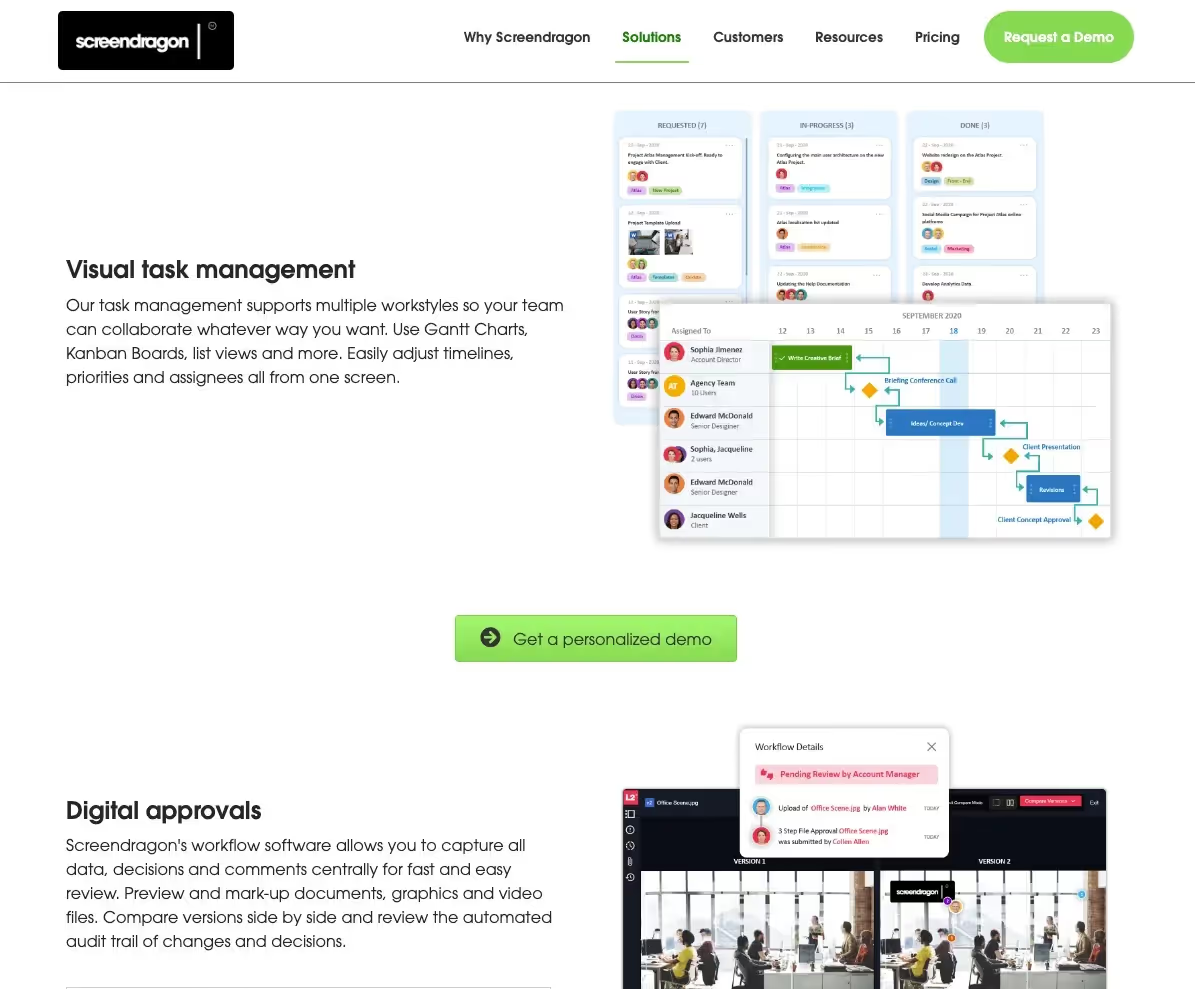
Most tools can do this in some form, but Screendragon does it in an elegant way.
The stages are shown at the top, and you go through them intuitively.
Another part that Screendragon dives deep into is briefing.
You can set specific details to fill out for each brief, and assign them quickly.
Briefs then become a foundational part of a "project" in Screendragon.
Scheduling and task management are standard, with the usual suspects:
I might not love the way they present their brand, but the product is sound.
Plus, it has great reviews, so it seems like a safe bet for serious agency owners.
These project management tools need no introduction.
Asana, Monday, ClickUp, Wrike…
If you've spent any time on YouTube or the web at large in your life, you've seen them.
And—frankly—they're not really tailored to creatives at all.
They can certainly fit a creative workflow, but they never truly settle on one way or another to get things done. They do it all, and that's where they draw the line (i.e. nowhere!).
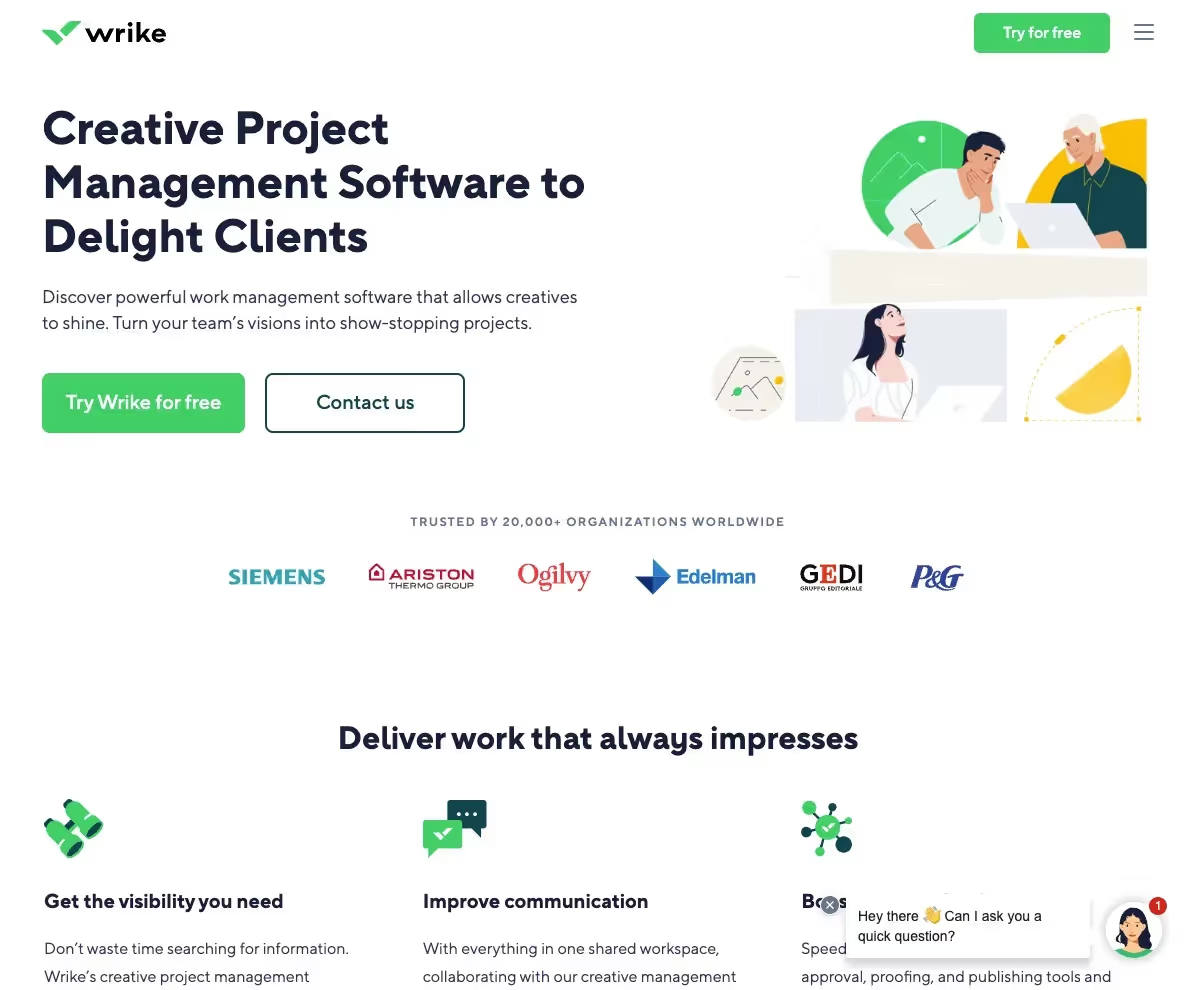
However, with the right time and effort, they're powerful tools.
Having large teams back huge software efforts like Asana or ClickUp matters because you know you'll always have support from both the teams themselves but also the community.
But you also have to deal with the scale factor.
These tools always want more from you, there is no end in their business model. So, unless you're 100% sure you want to invest in their ecosystem, it's best to use dedicated software.
There's nothing worse than waking up one day thinking:
"Damn, I really hate working with that stupid project management tool."
There are entire swaths of professionals out there loathing the time they have to spend figuring out how their project management tool works instead of » It. Just. Damn. Working.
And that's no different for creatives like you.
The biggest tools will hook you with the all-in-one, personalized yet simple promise:
But the reality is, creatives have their own unique needs.
And no matter the amount of "customization" out there, using purpose-built tools is almost always better: they solve your core problems, they evolve in your direction, and they are a pleasure to use.
Don't choose a tool because it "has it all."
Choose it because it helps you grow effectively and you love using it.
FREQUENTLY ASKED QUESTIONS
What is creative project management?
Creative project management involves overseeing tasks and activities usually related to design, art, drawing, dance, and other creative efforts. It's about nurturing creativity, facilitating collaboration, and ensuring deadlines are met within the context of the creative process.
How do you effectively keep track of a creative project?
To effectively keep track of a creative project, you can use software tools designed specifically for creative project management, such as ManyRequests, Productive, NiftyPM, or Workamajig. These tools offer features like task assignment, progress tracking, file sharing, and inline communication, making it easier to monitor the project's development and maintain transparency.
What's the difference between creative and traditional project management?
The difference between creative and traditional project management lies in the approach and tools used. Creative project management is tailored to artistic, design, or innovation-driven projects, whereas traditional project management can be applied to a wide range of industries. Creative project management emphasizes design feedback, brainstorming, whiteboards, UX flows, etc.